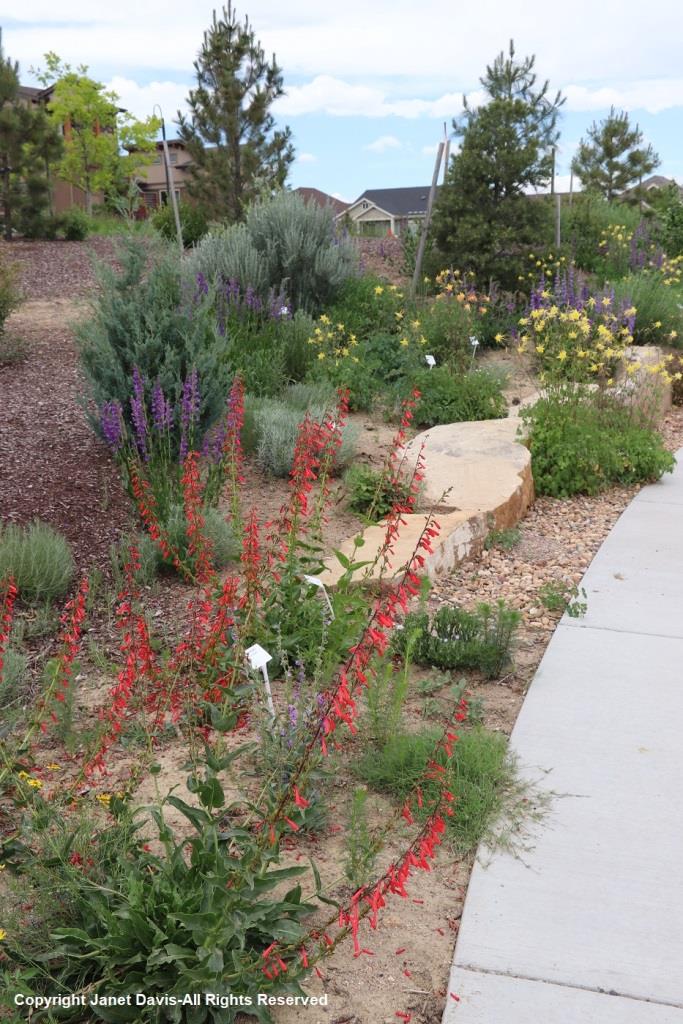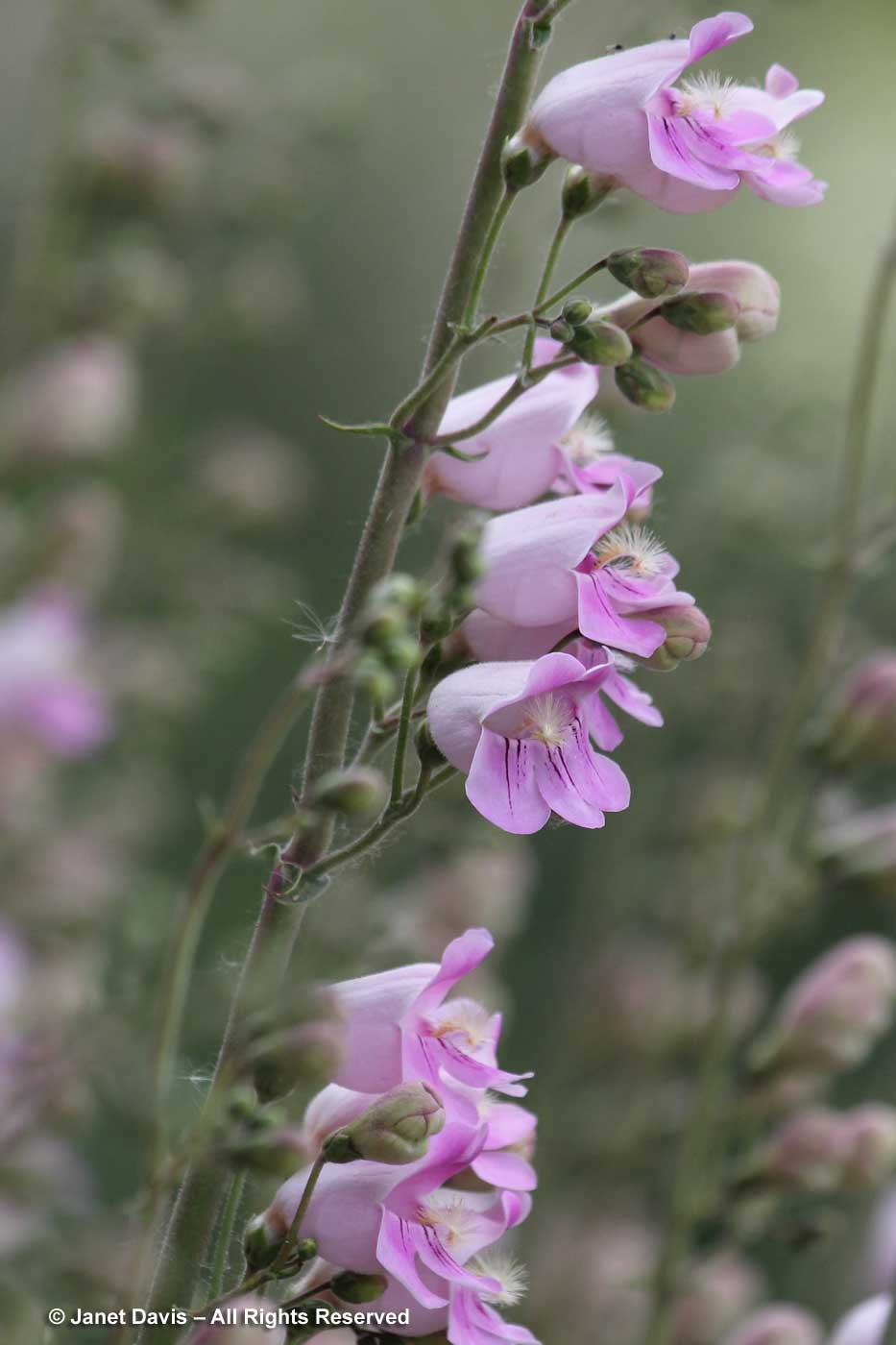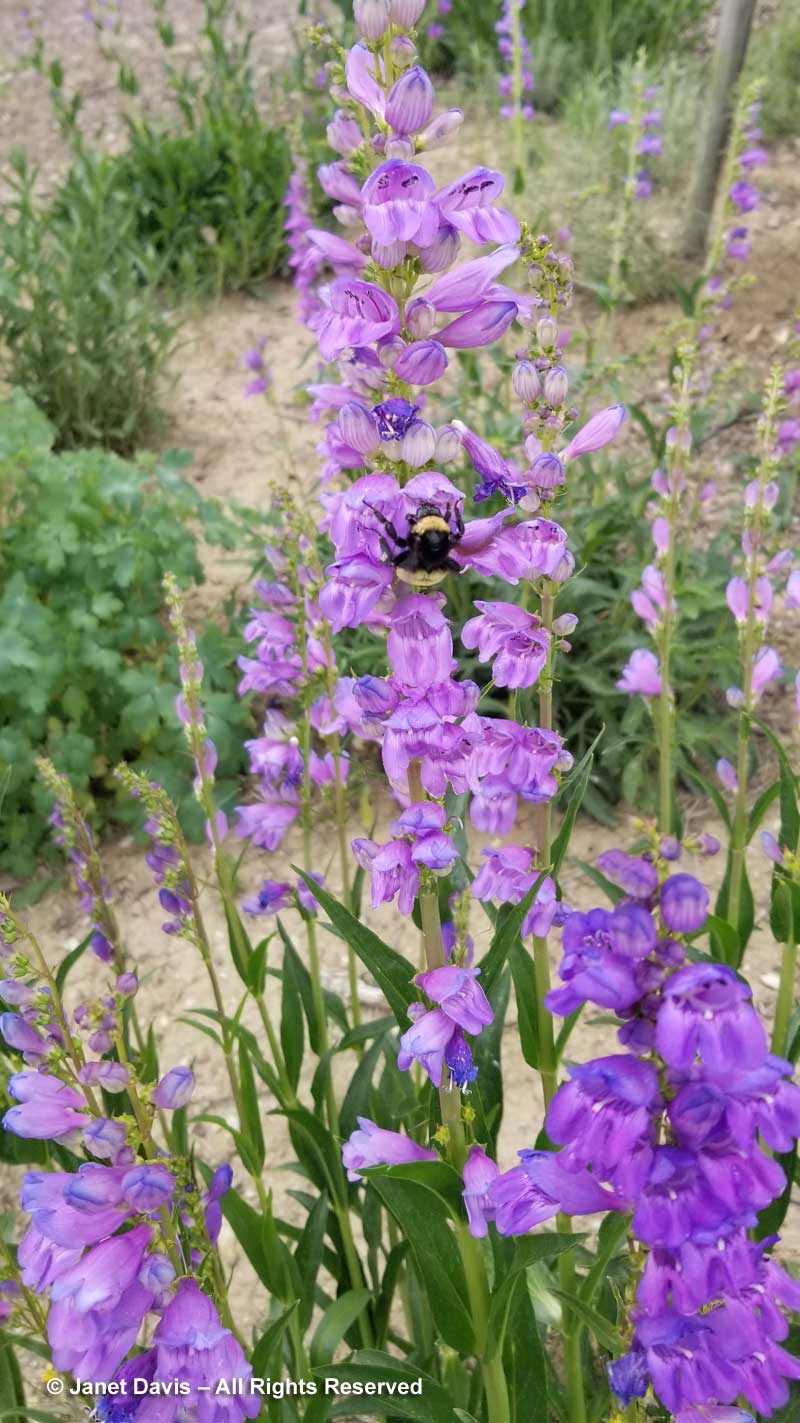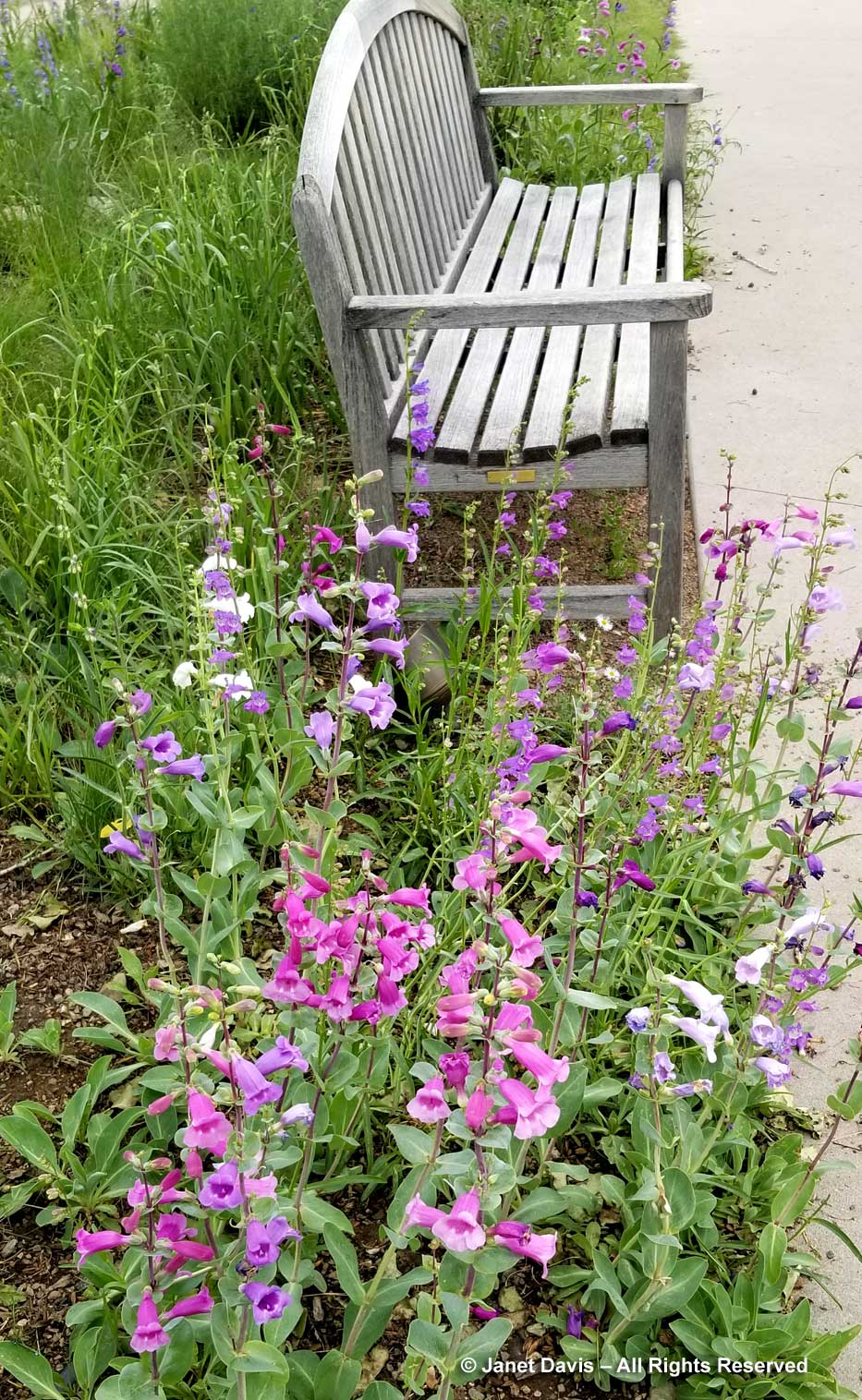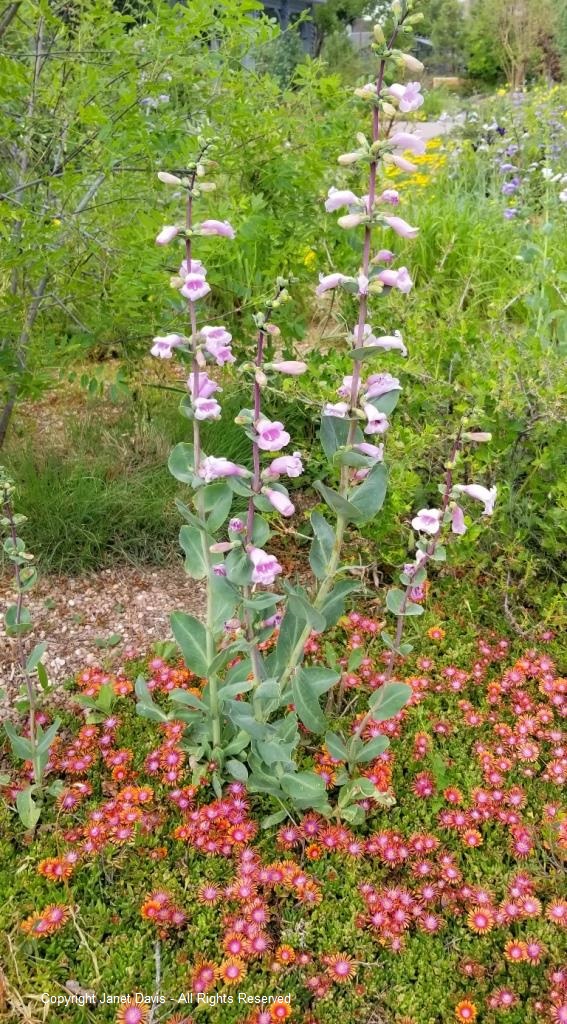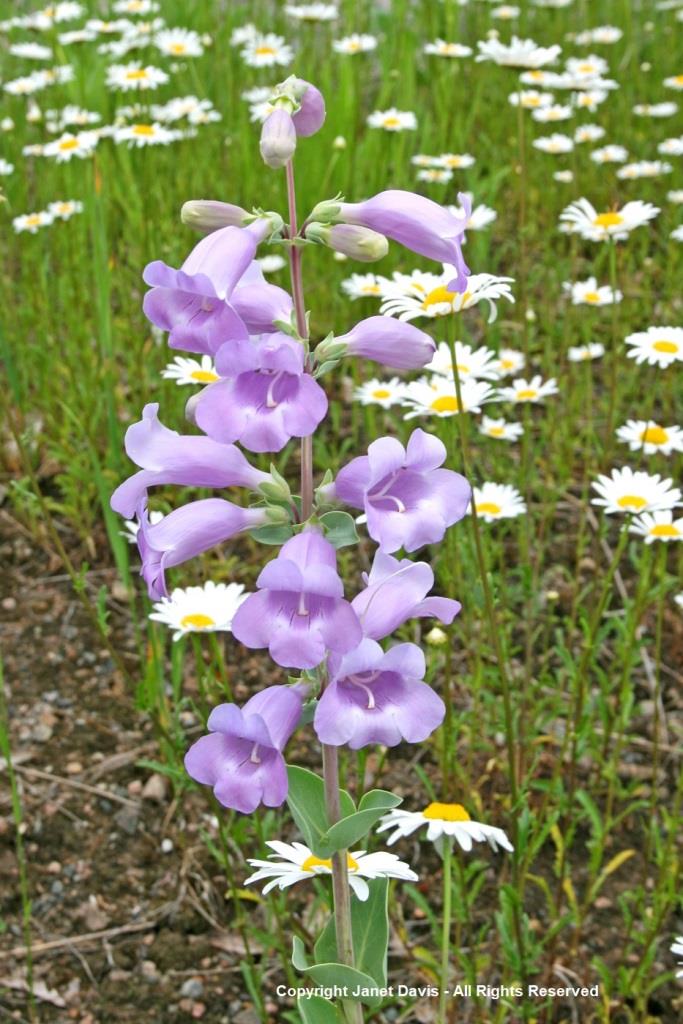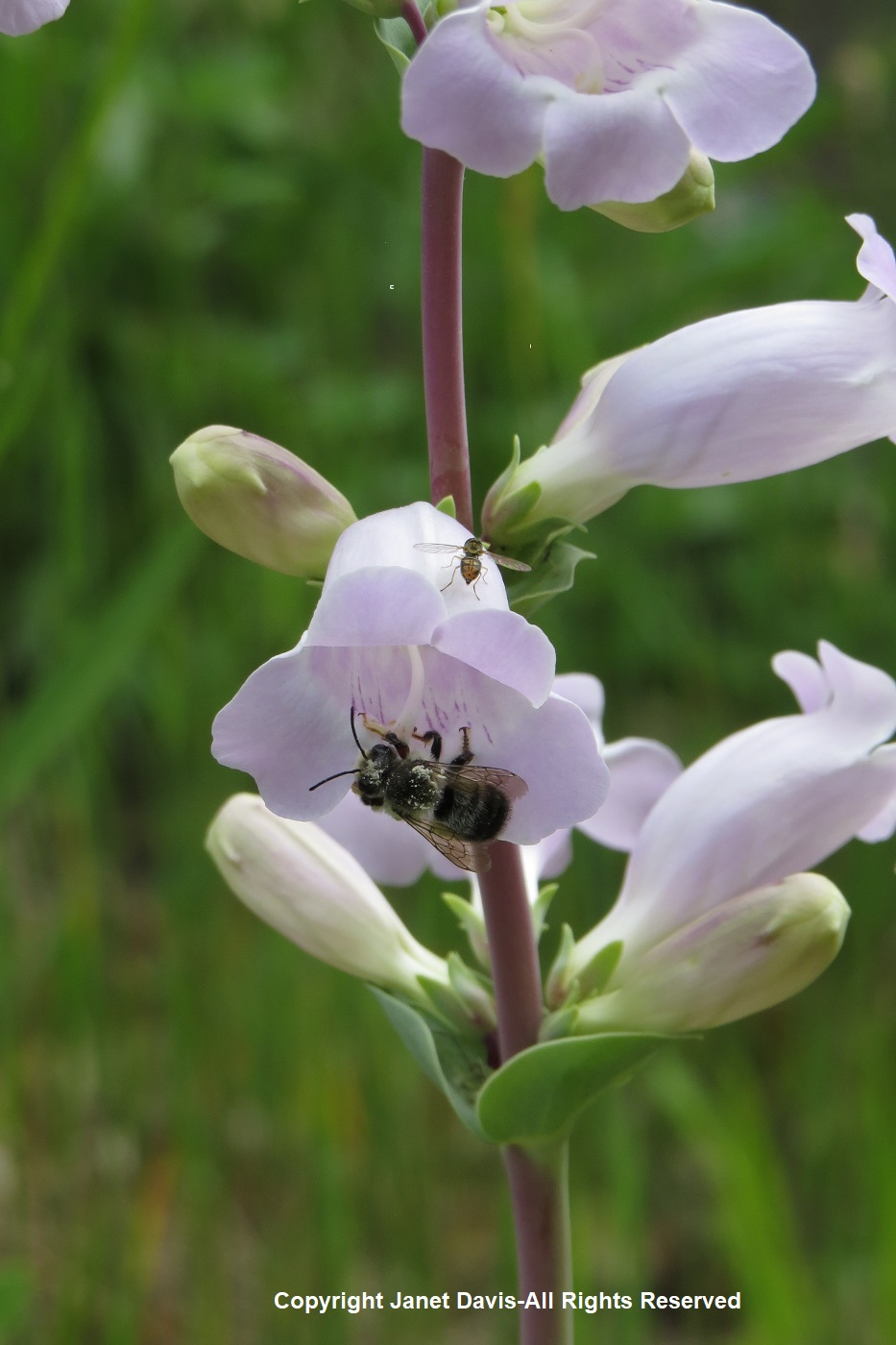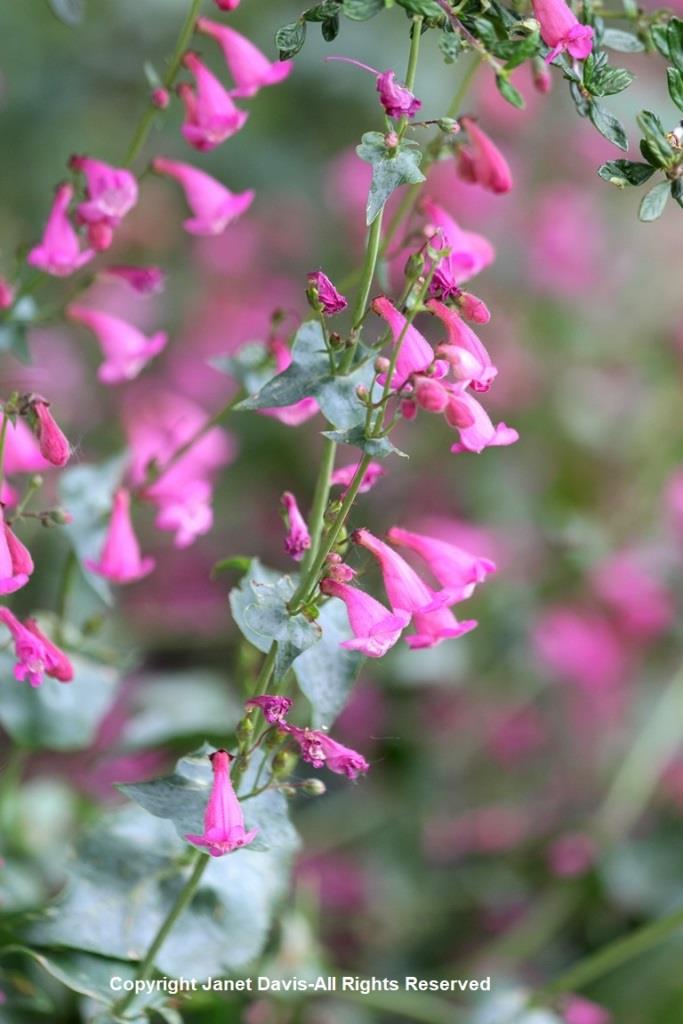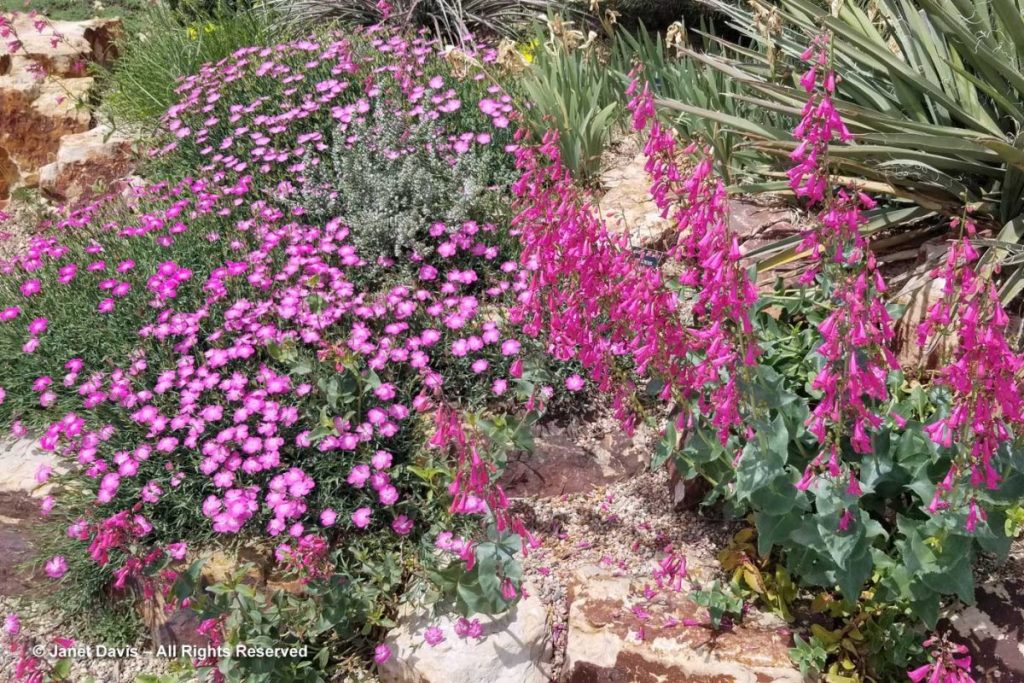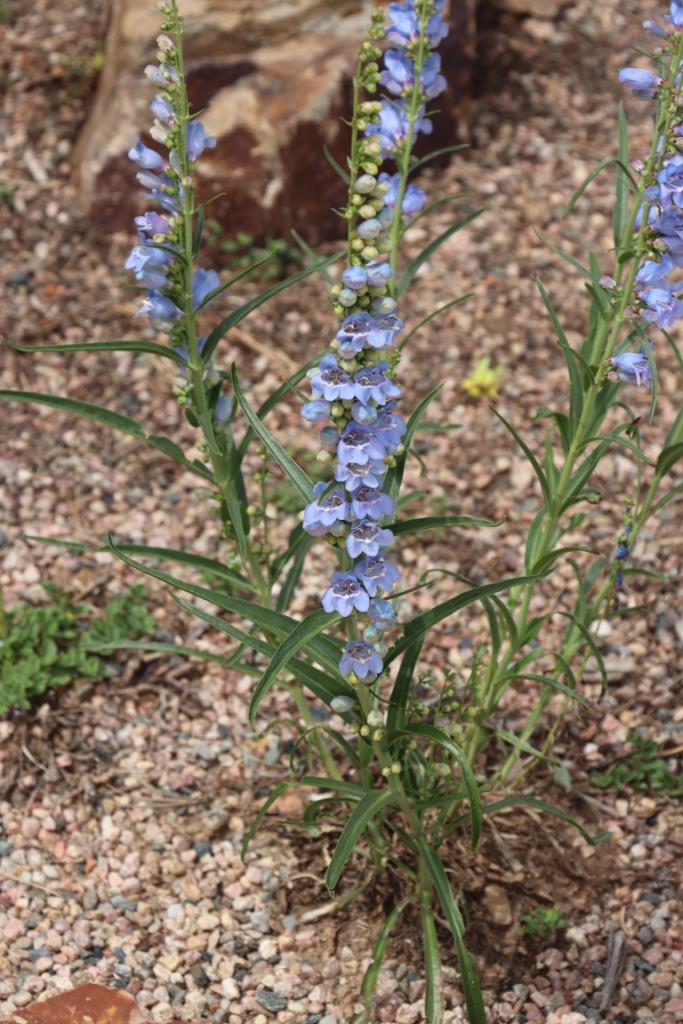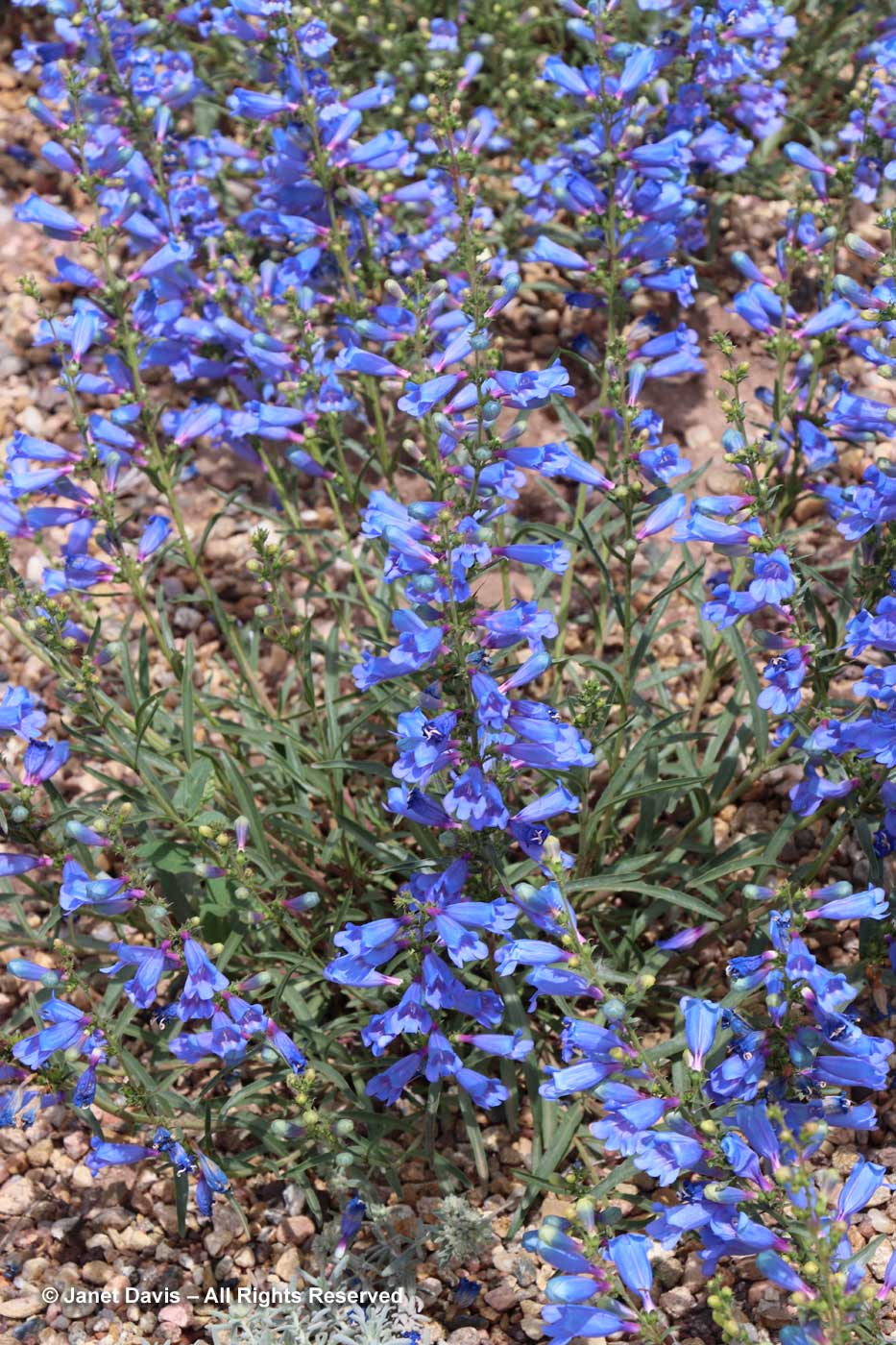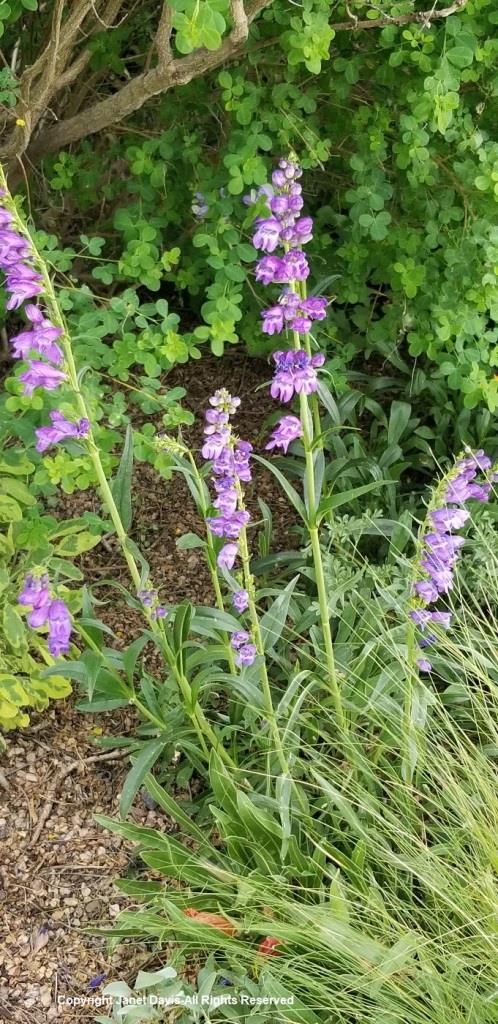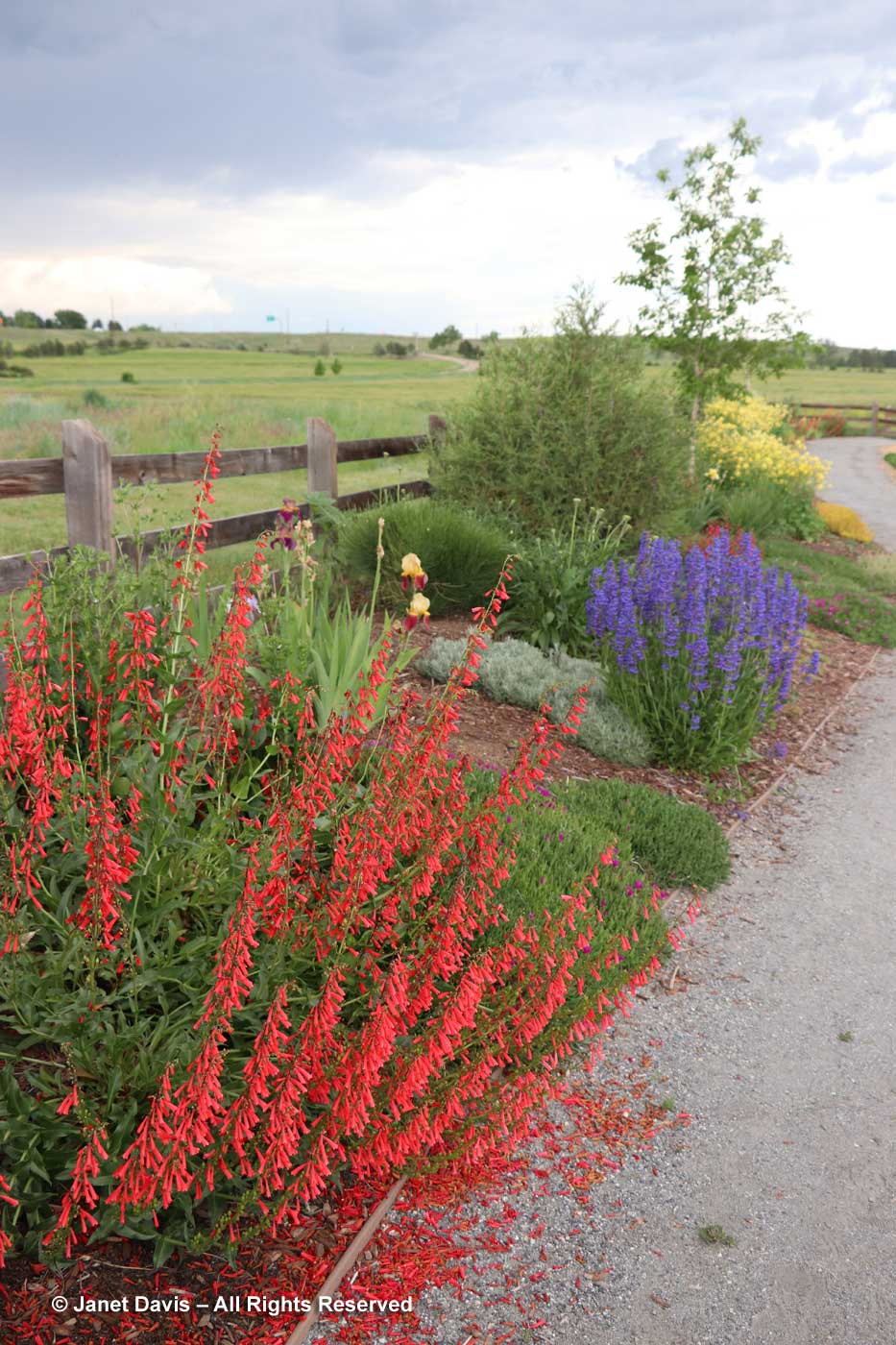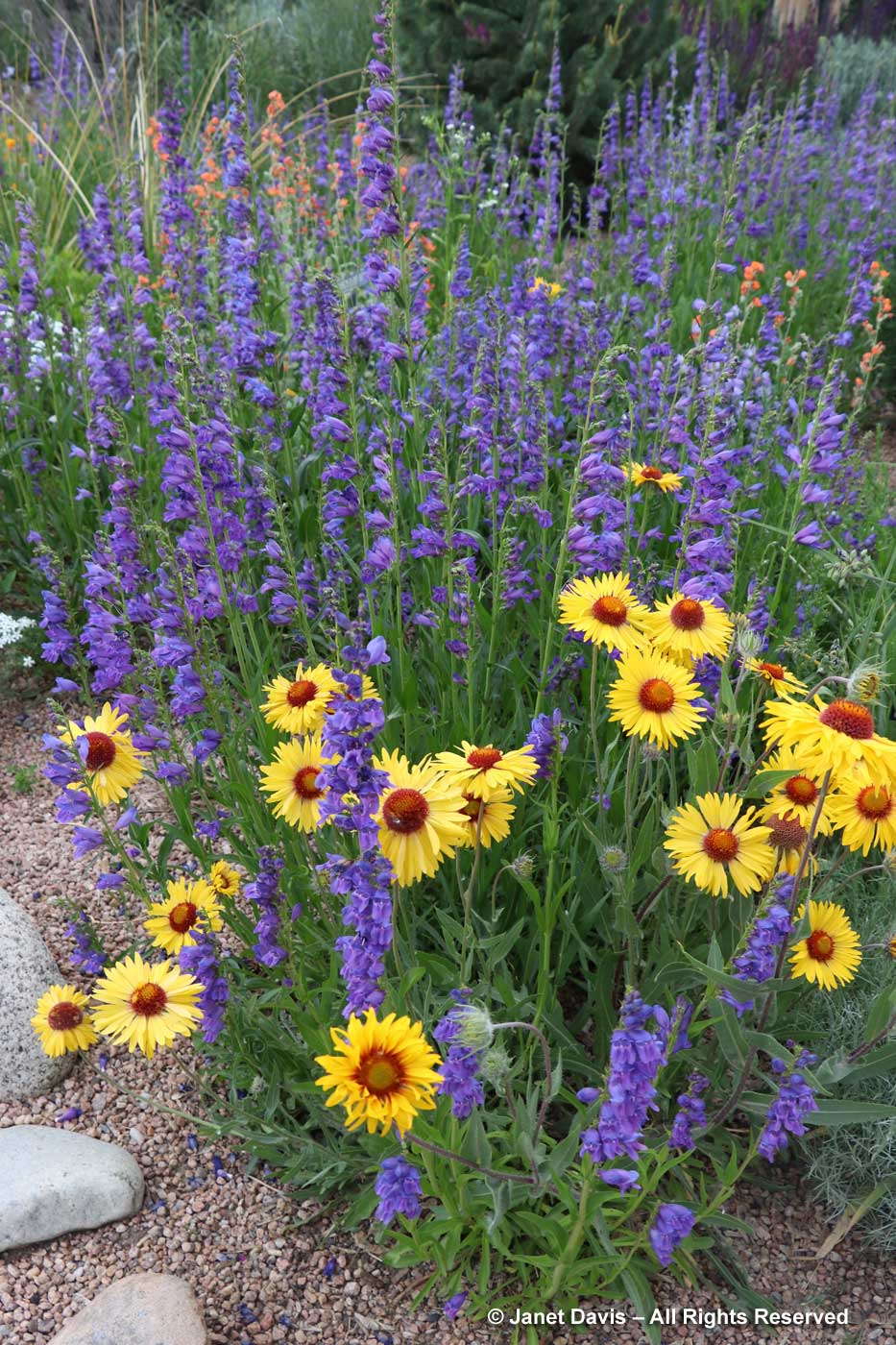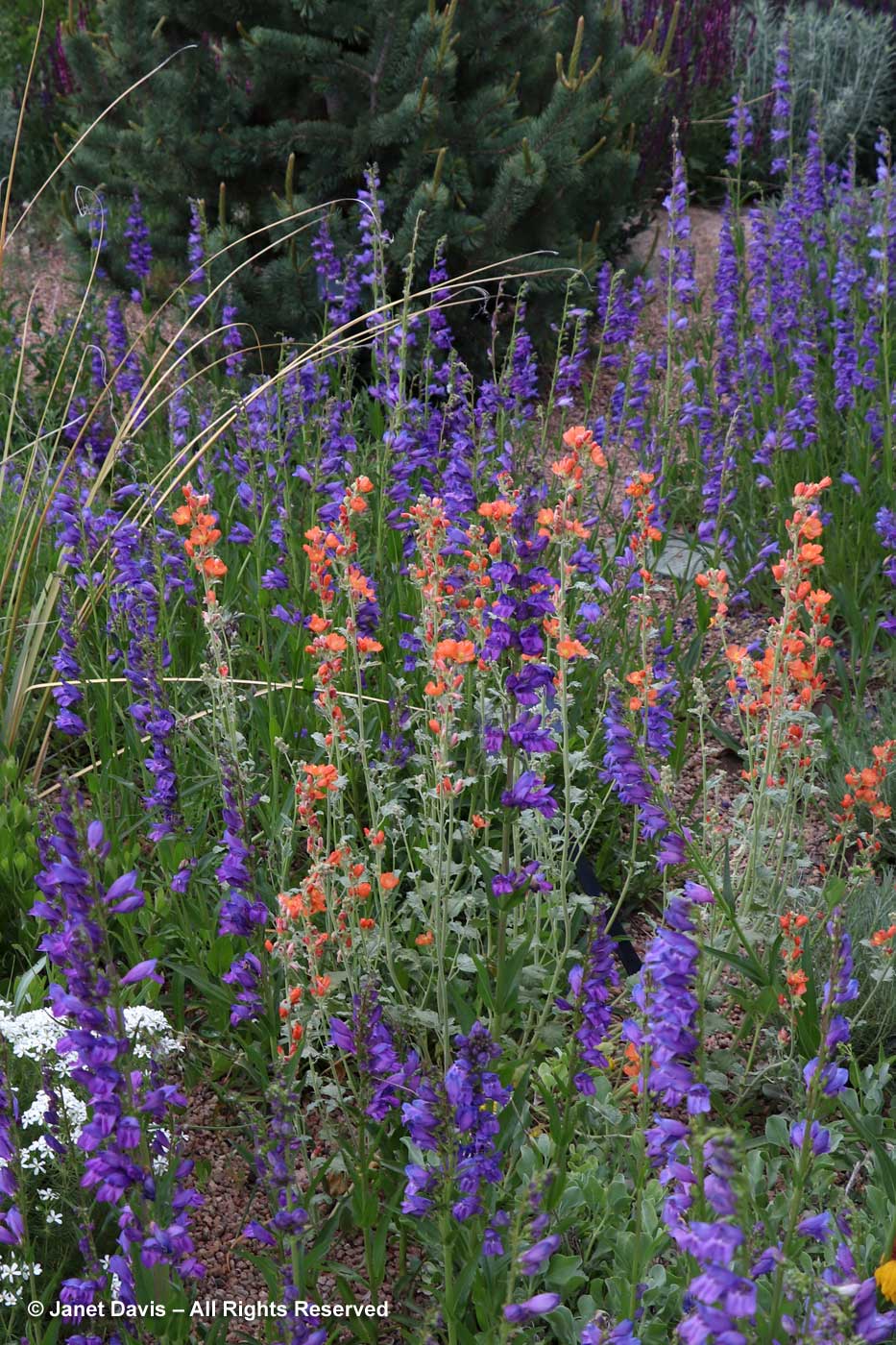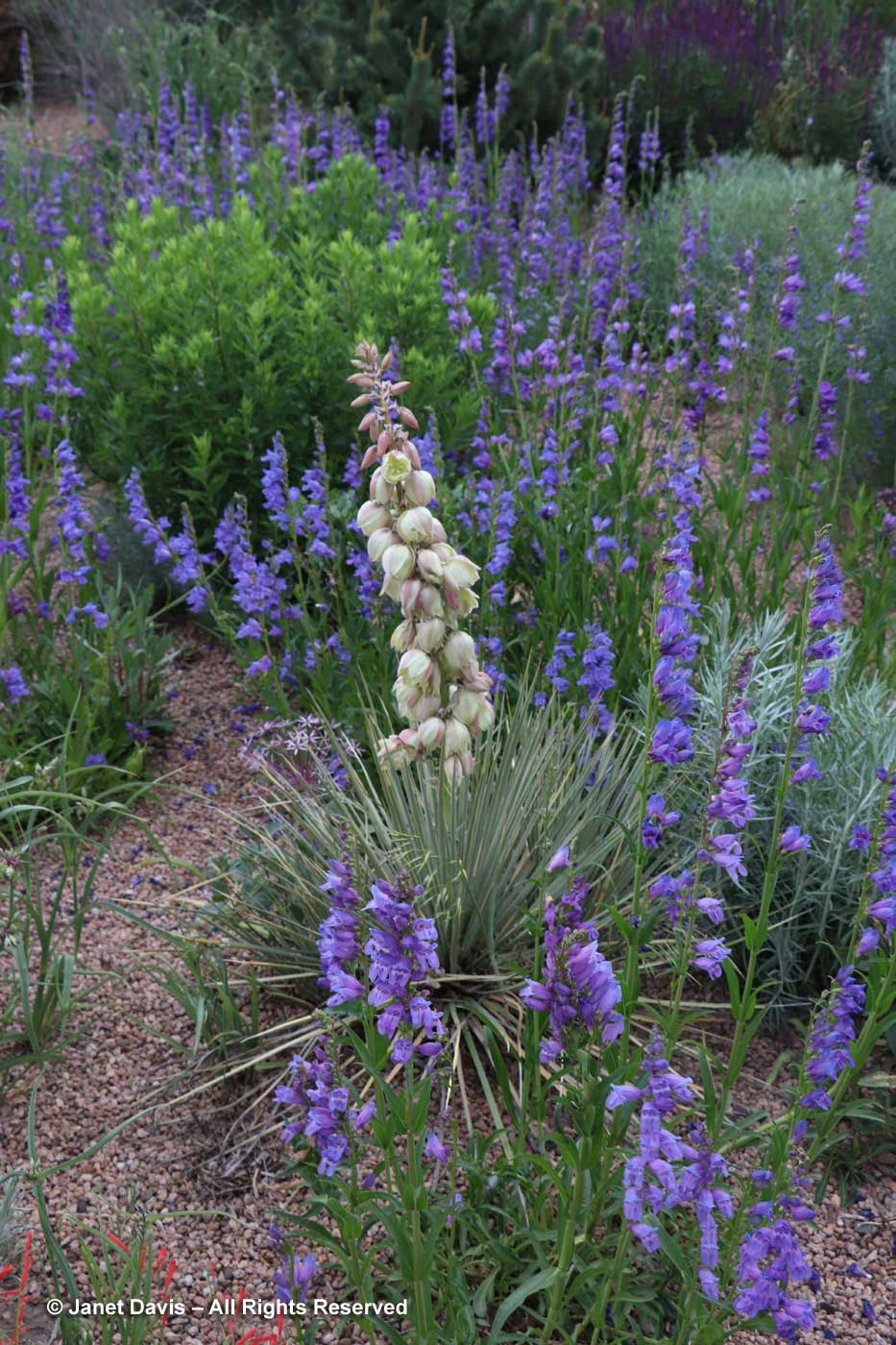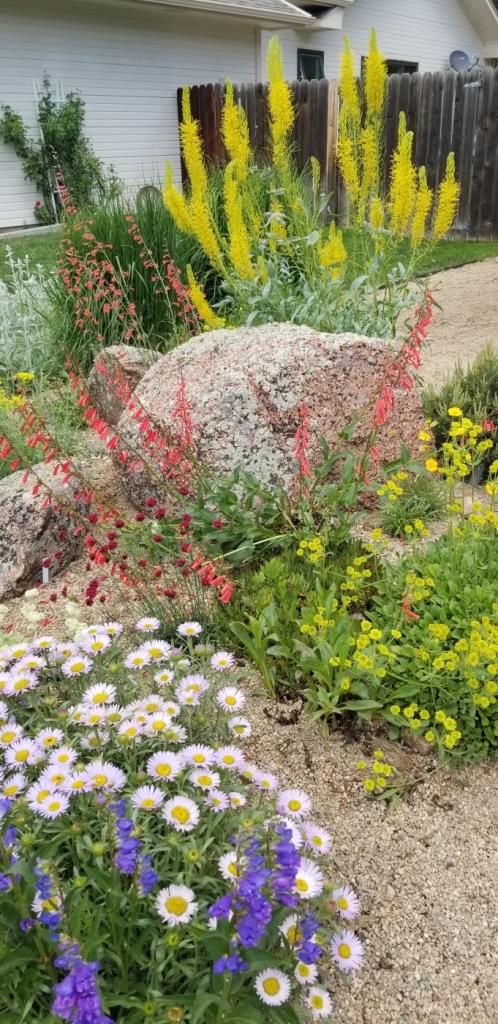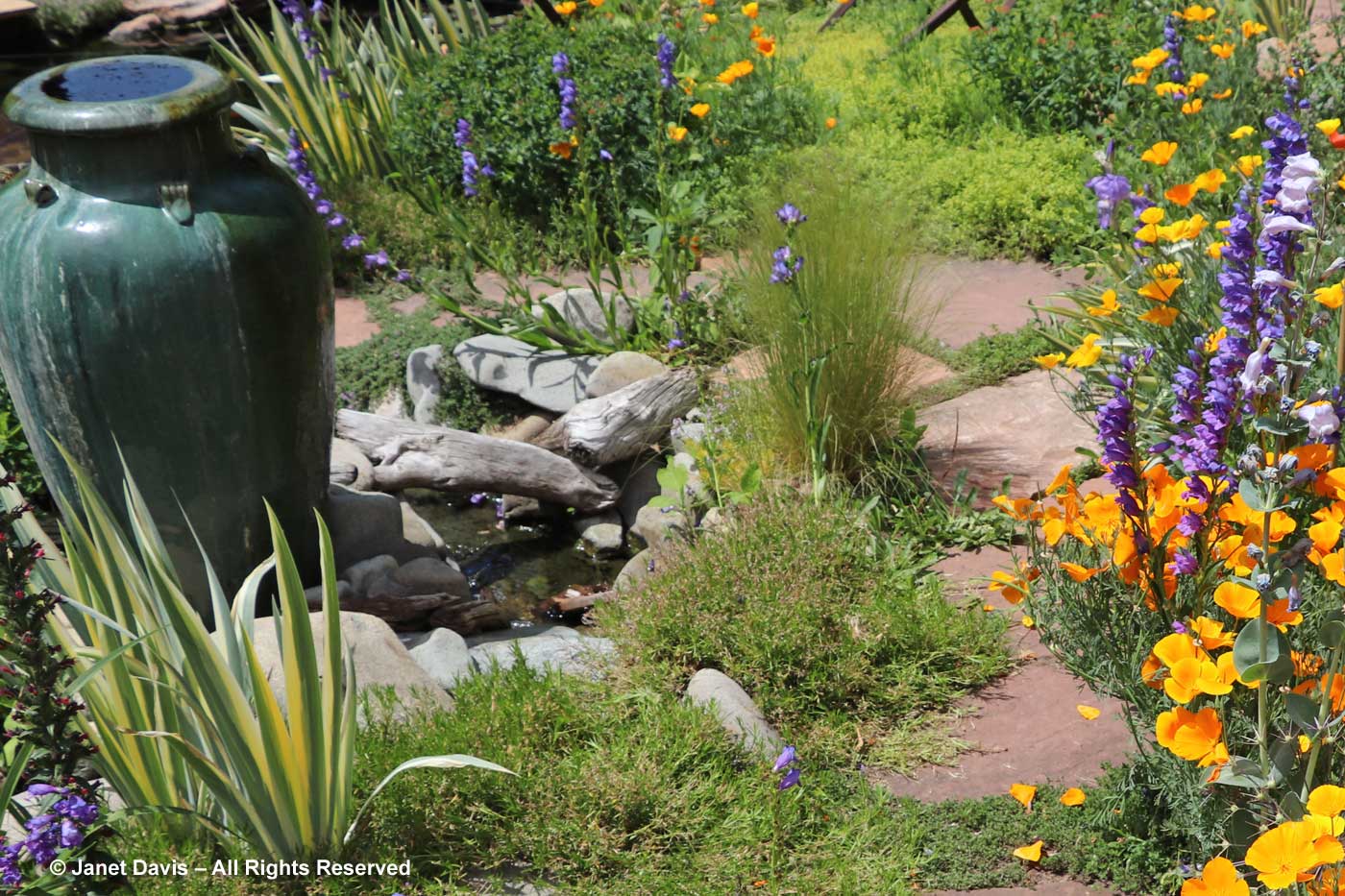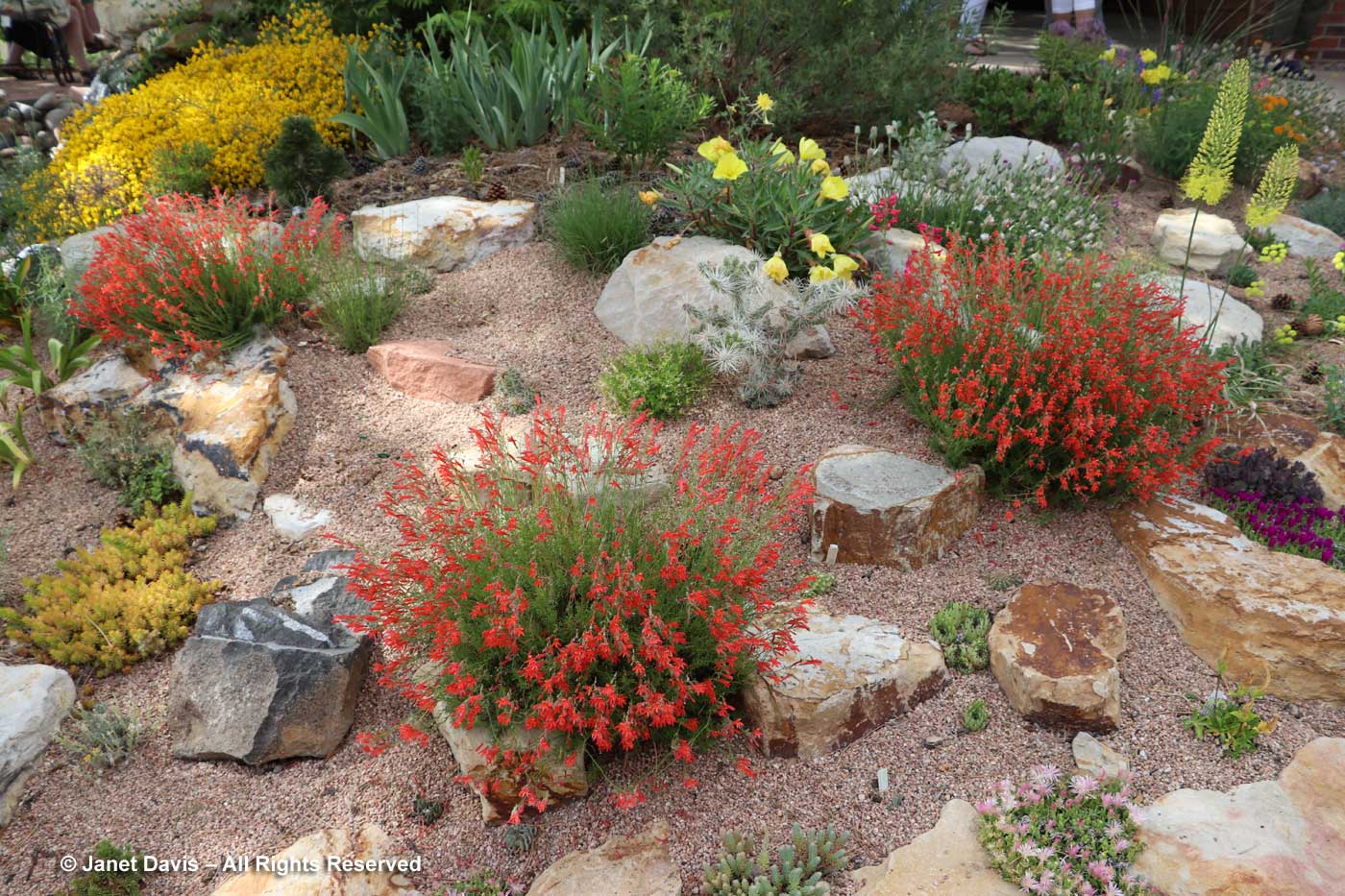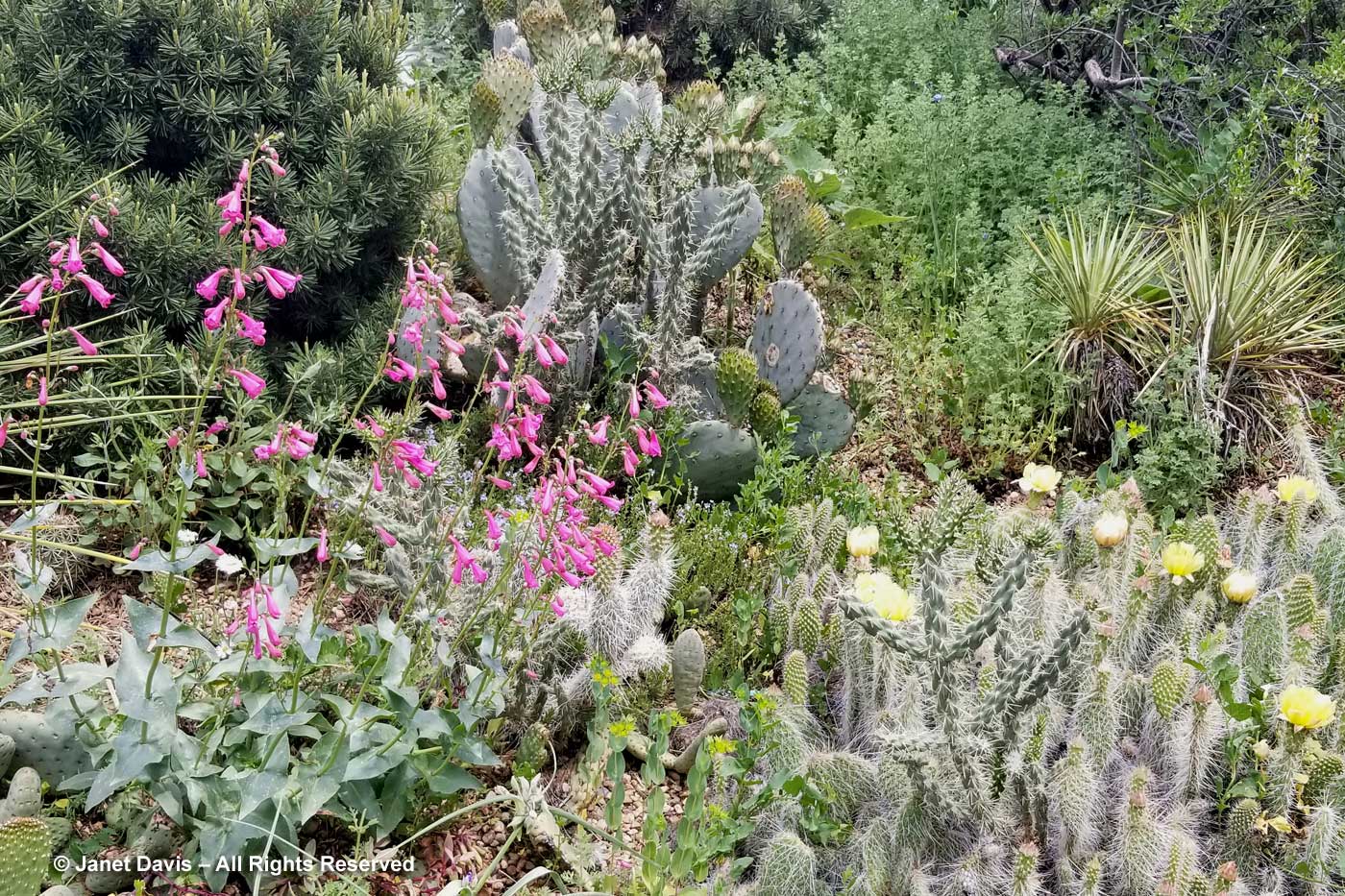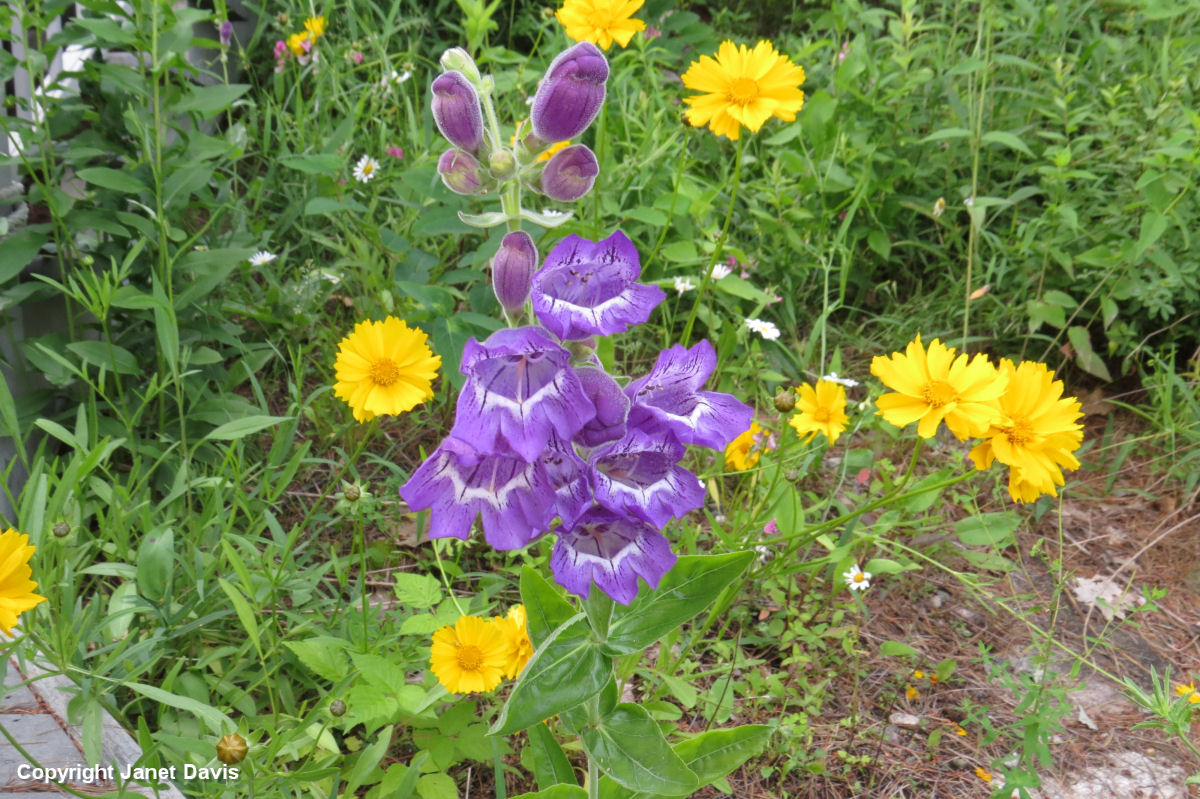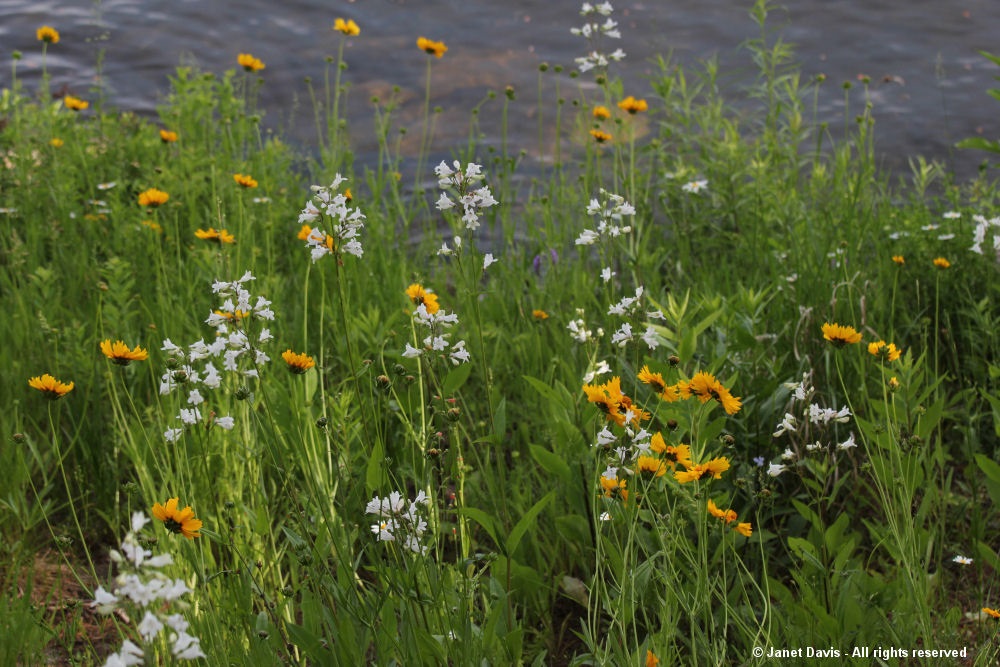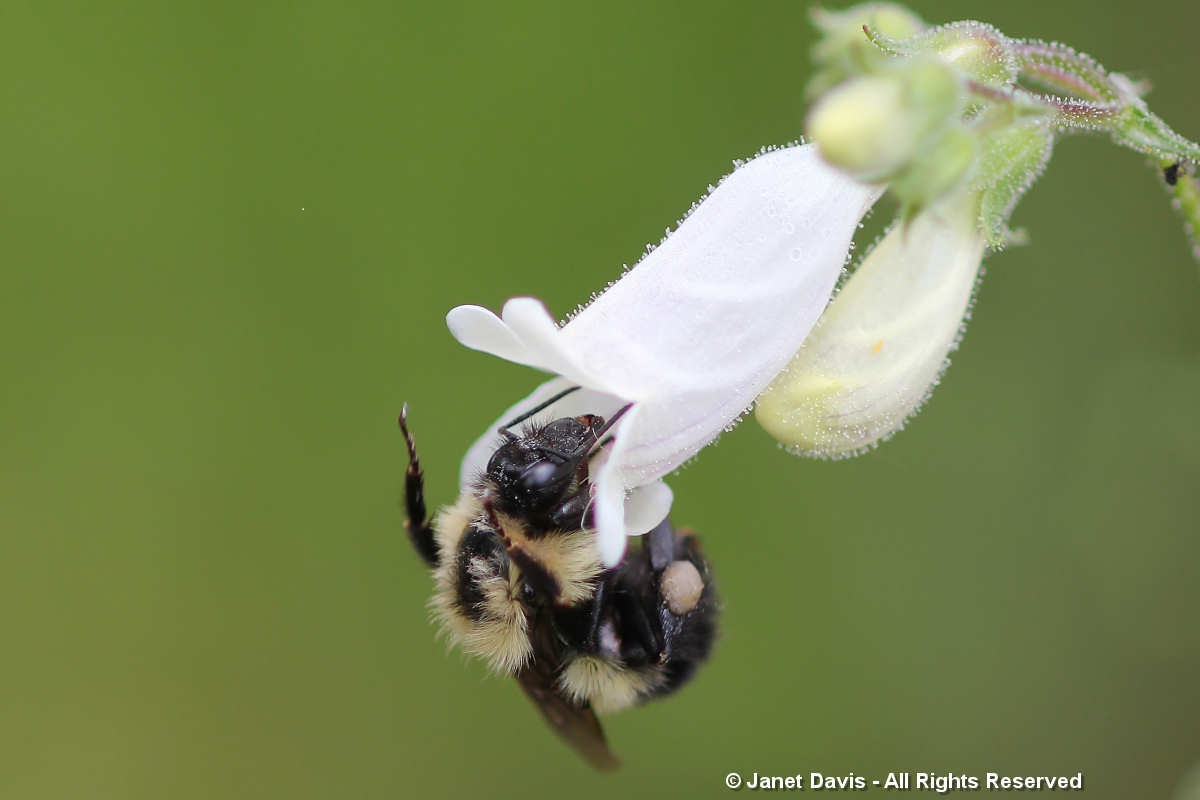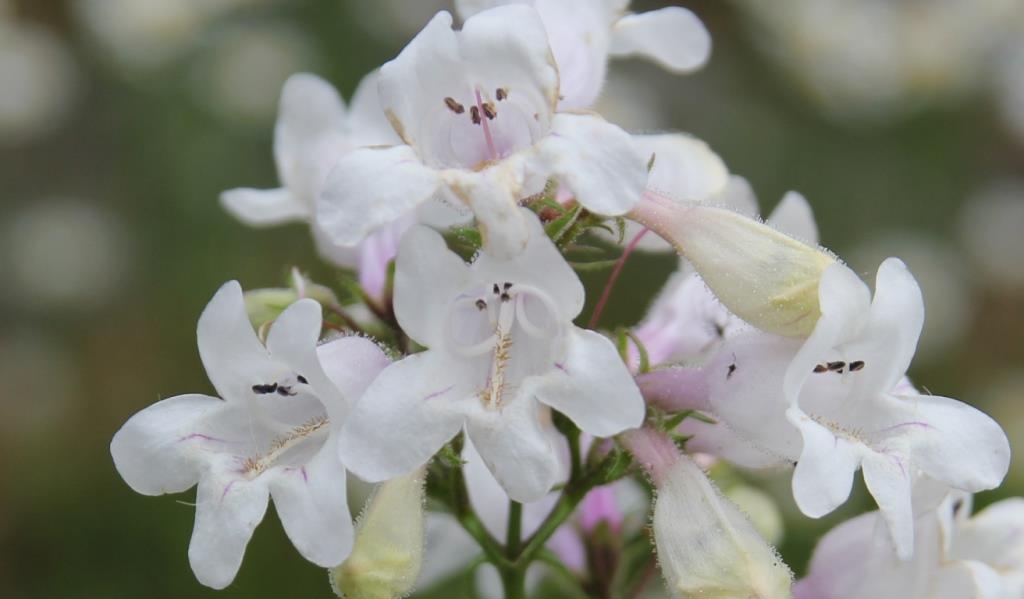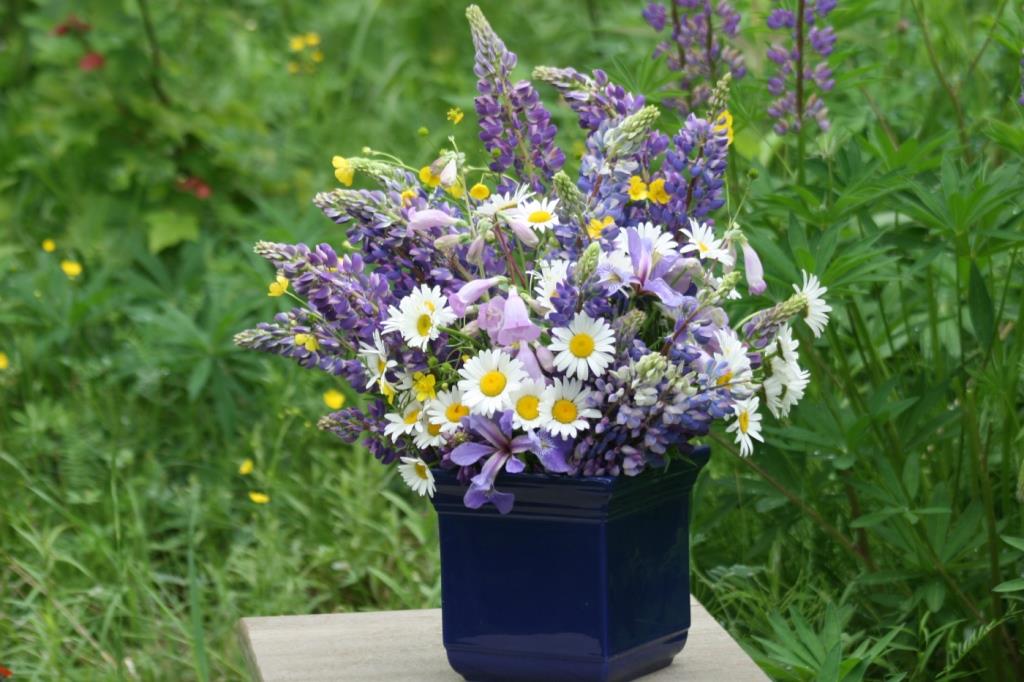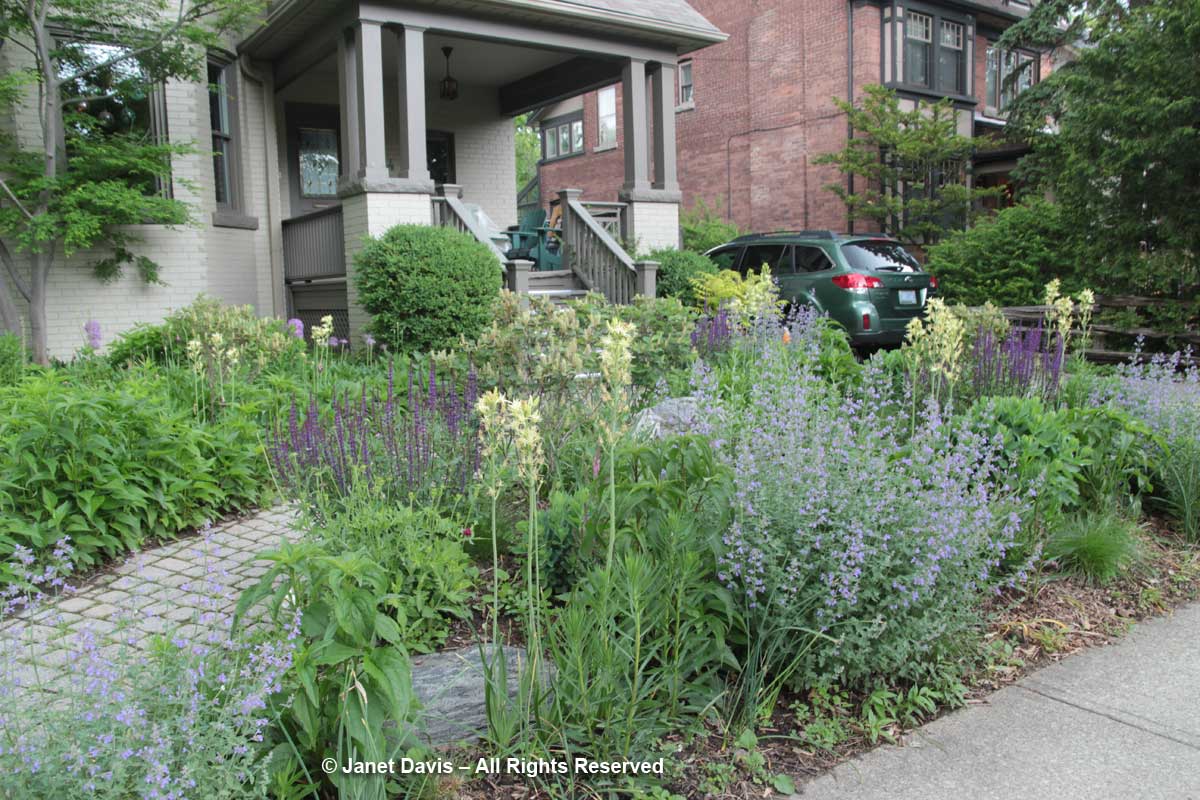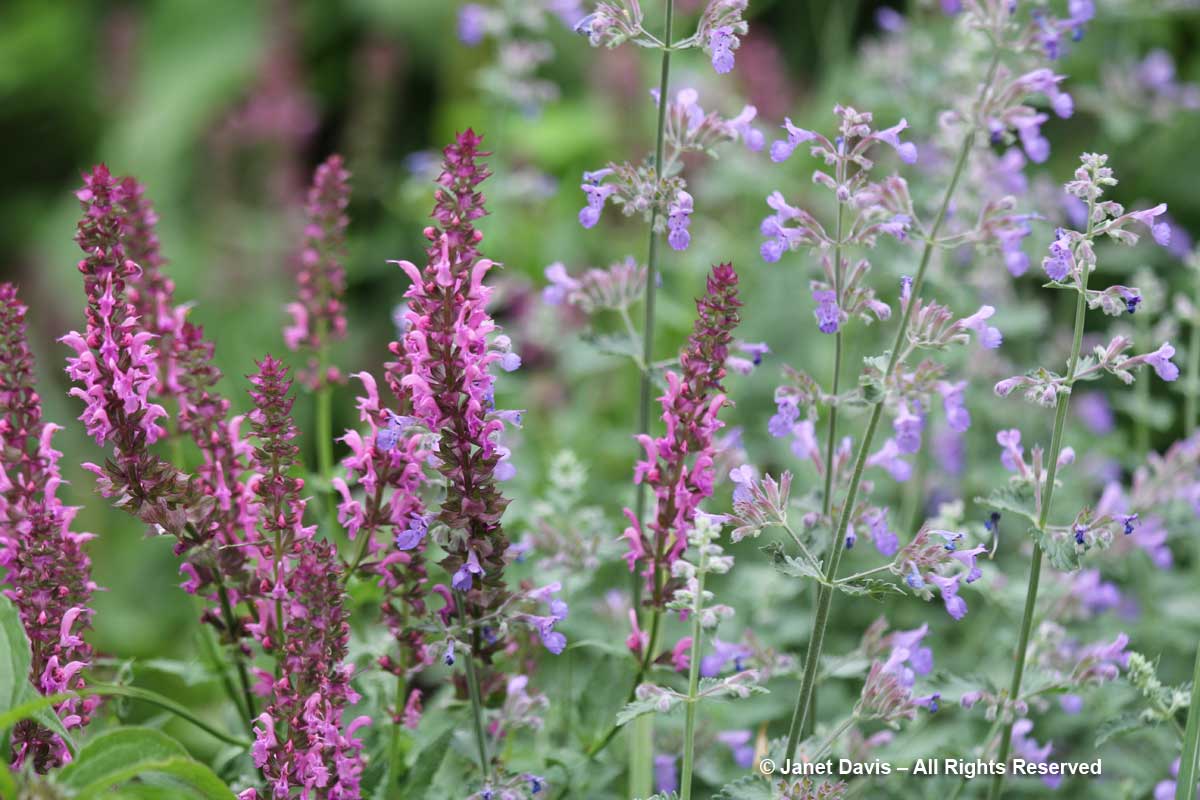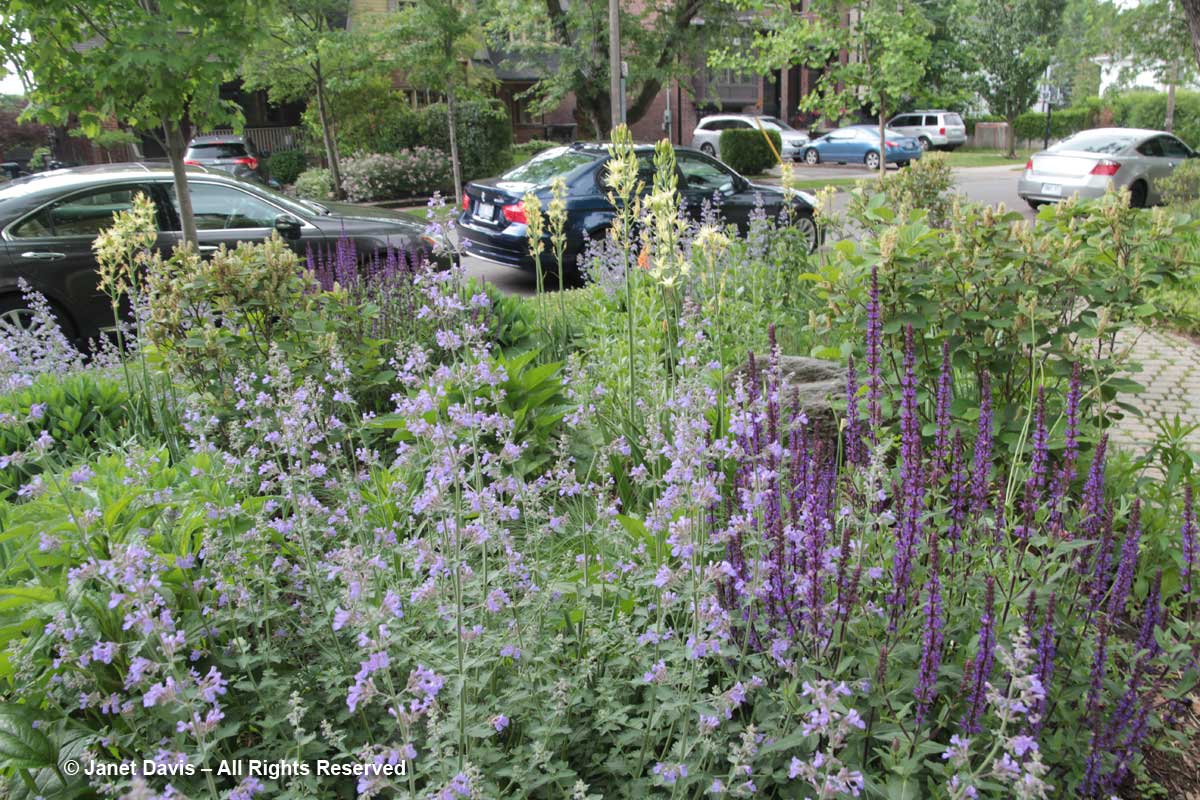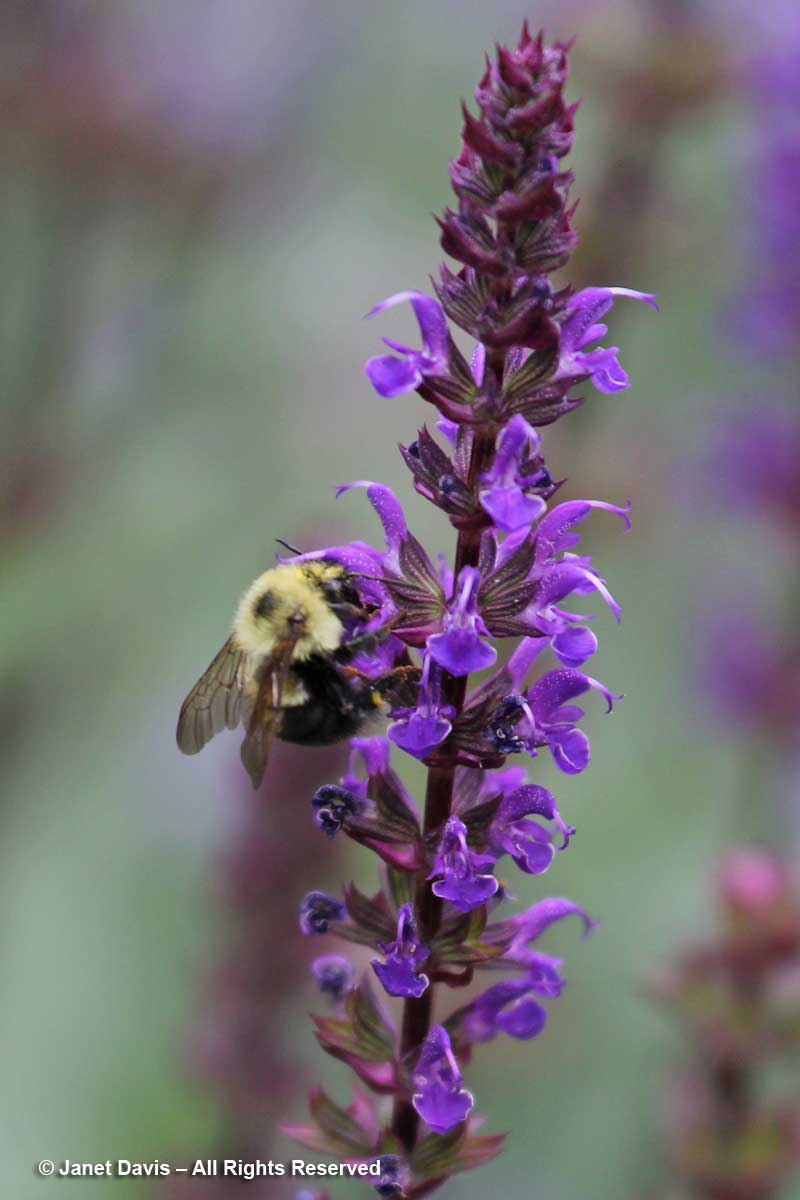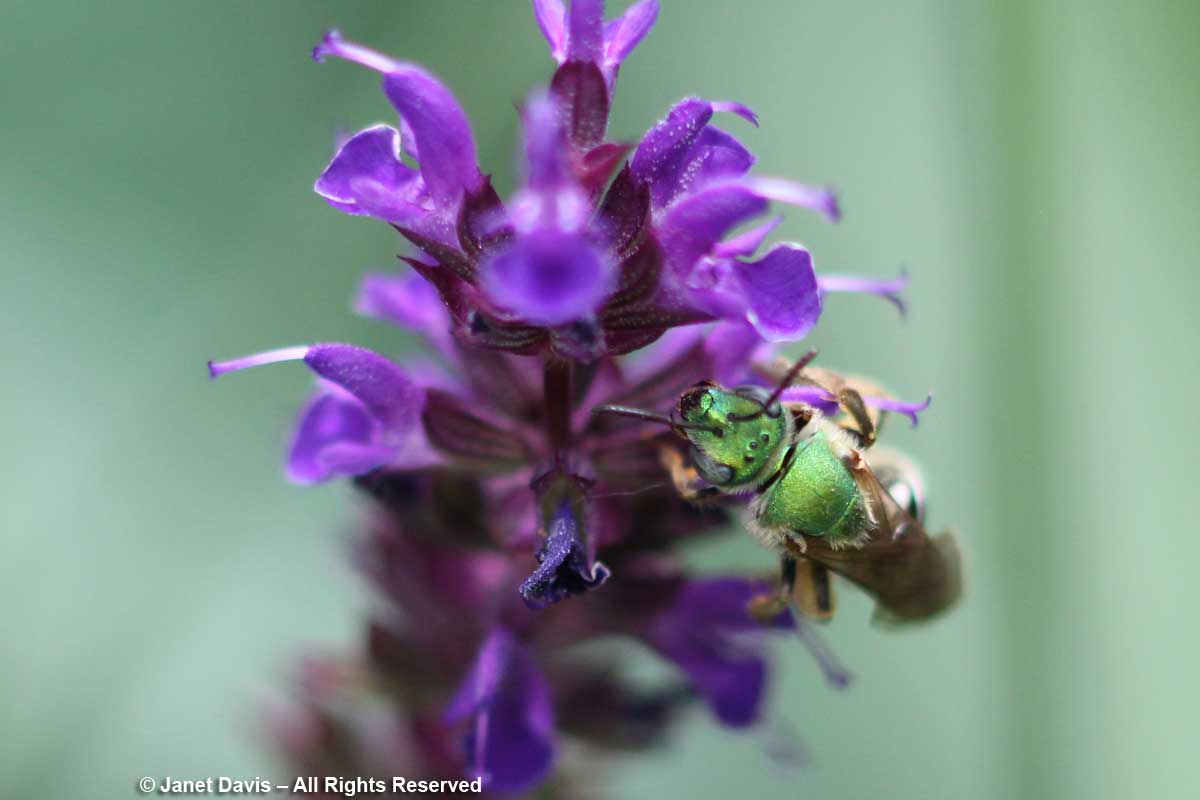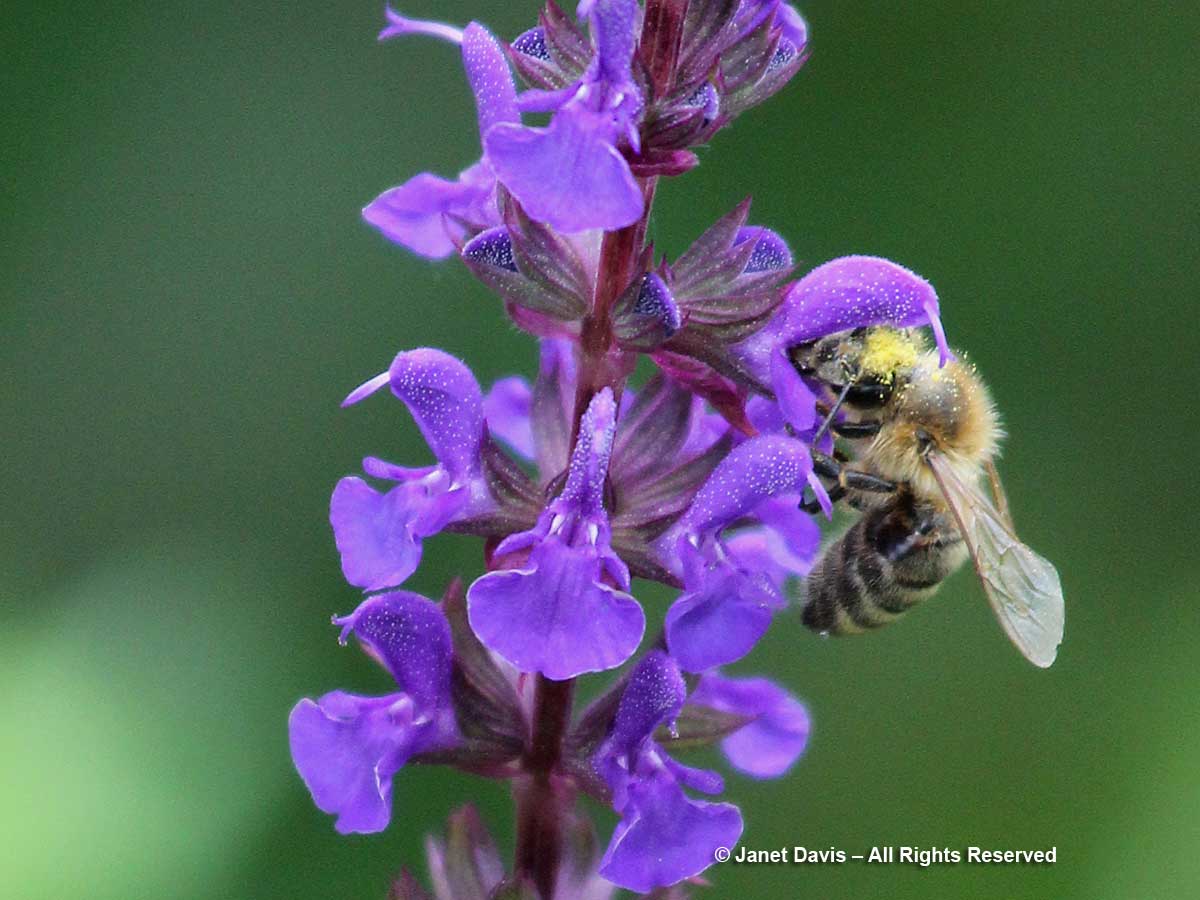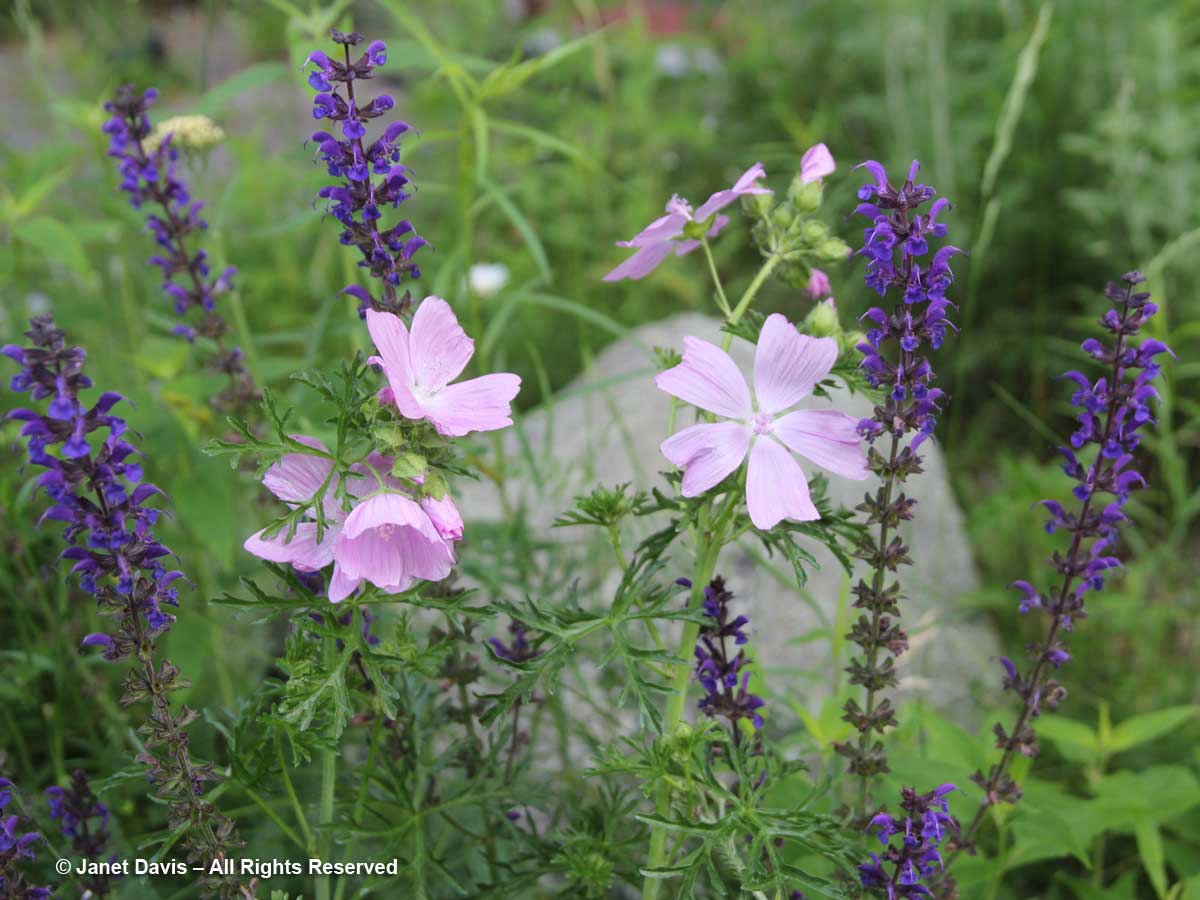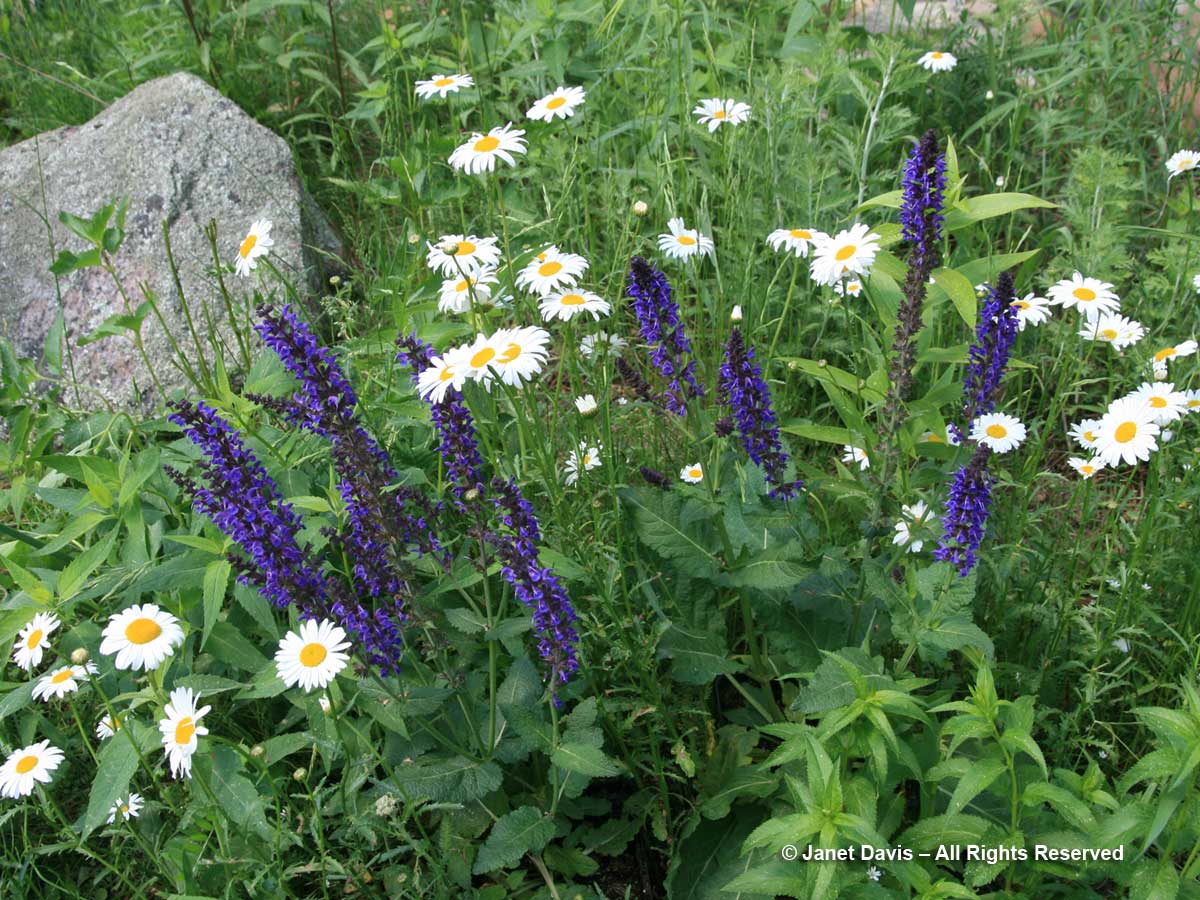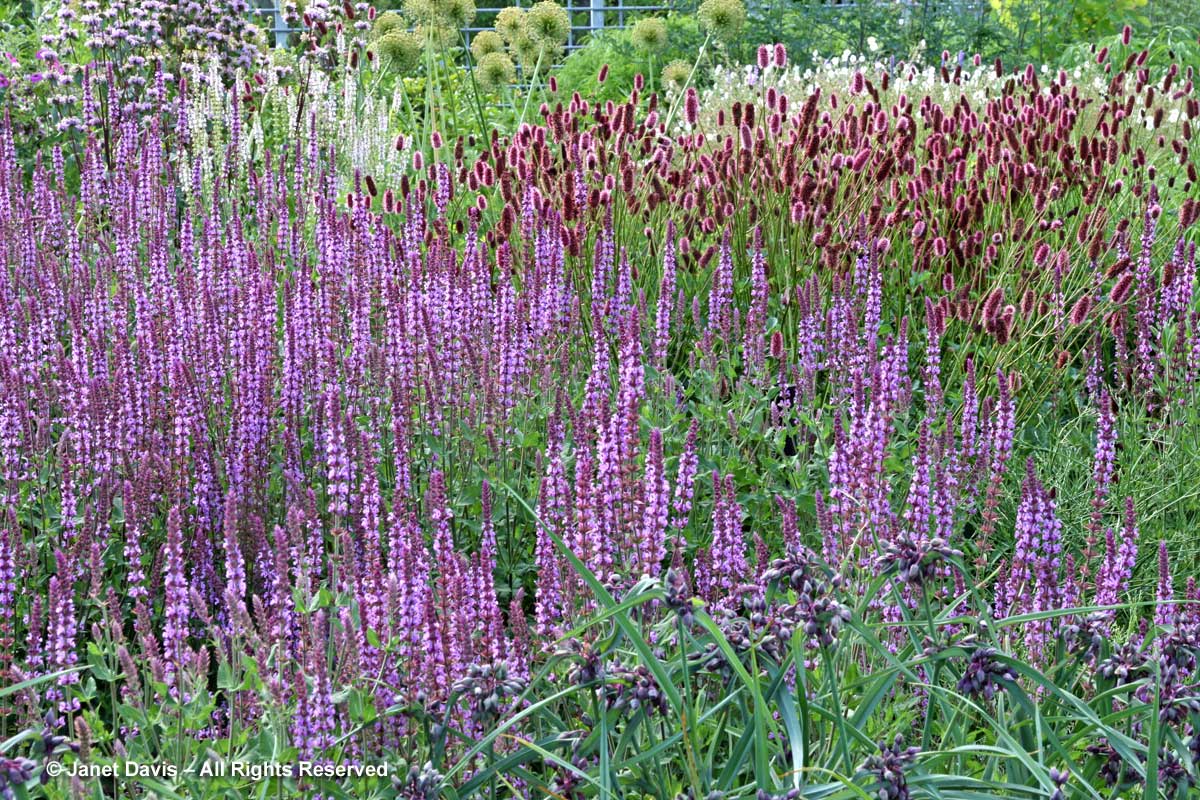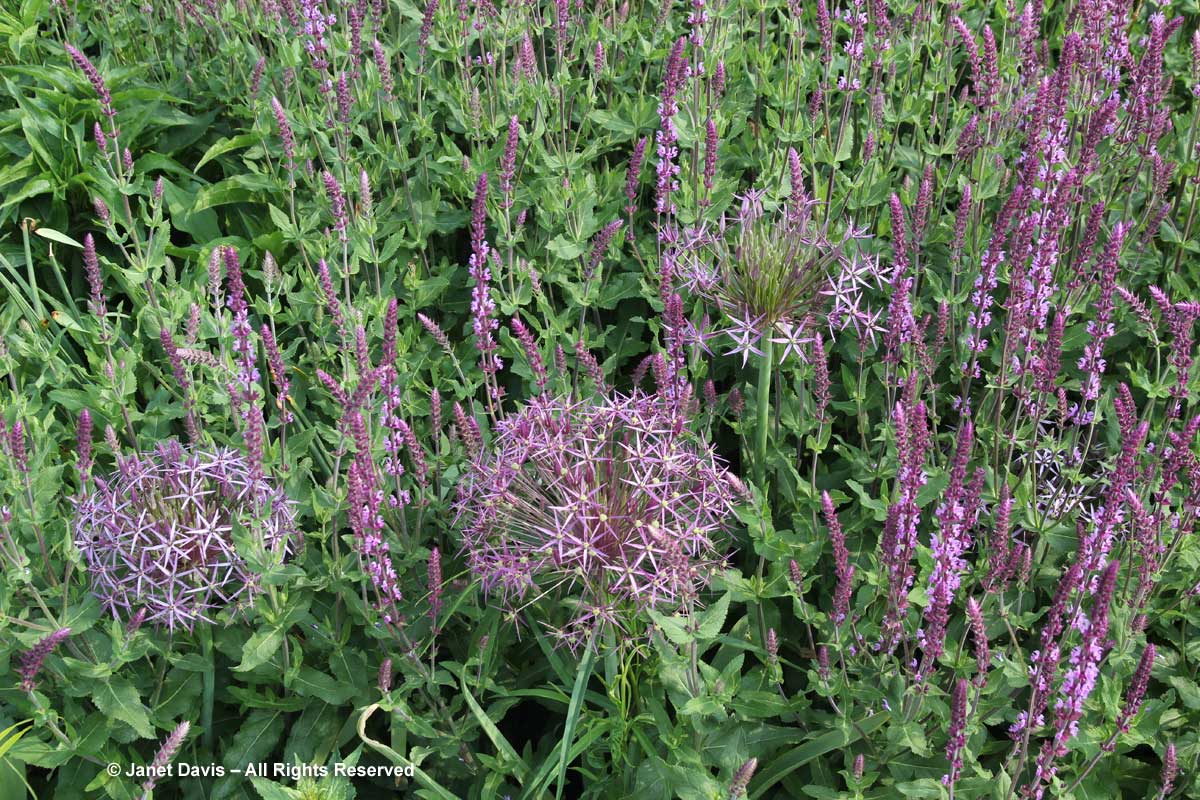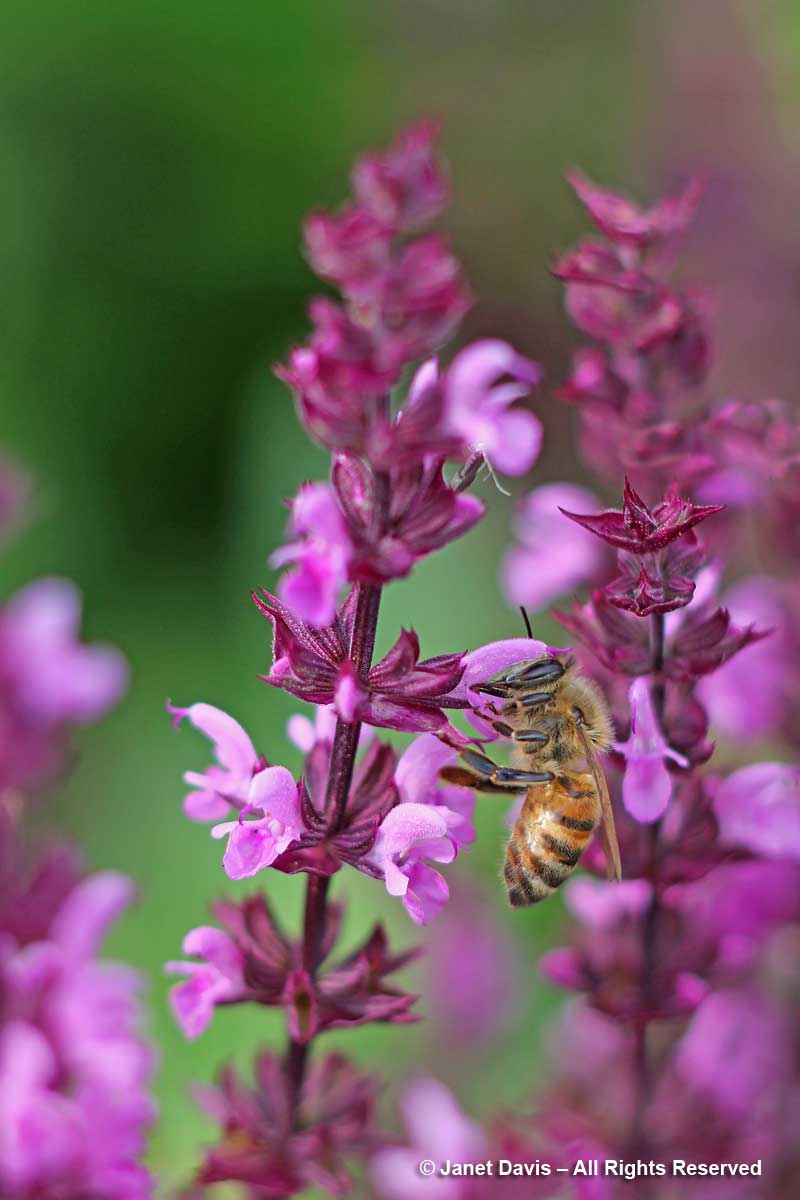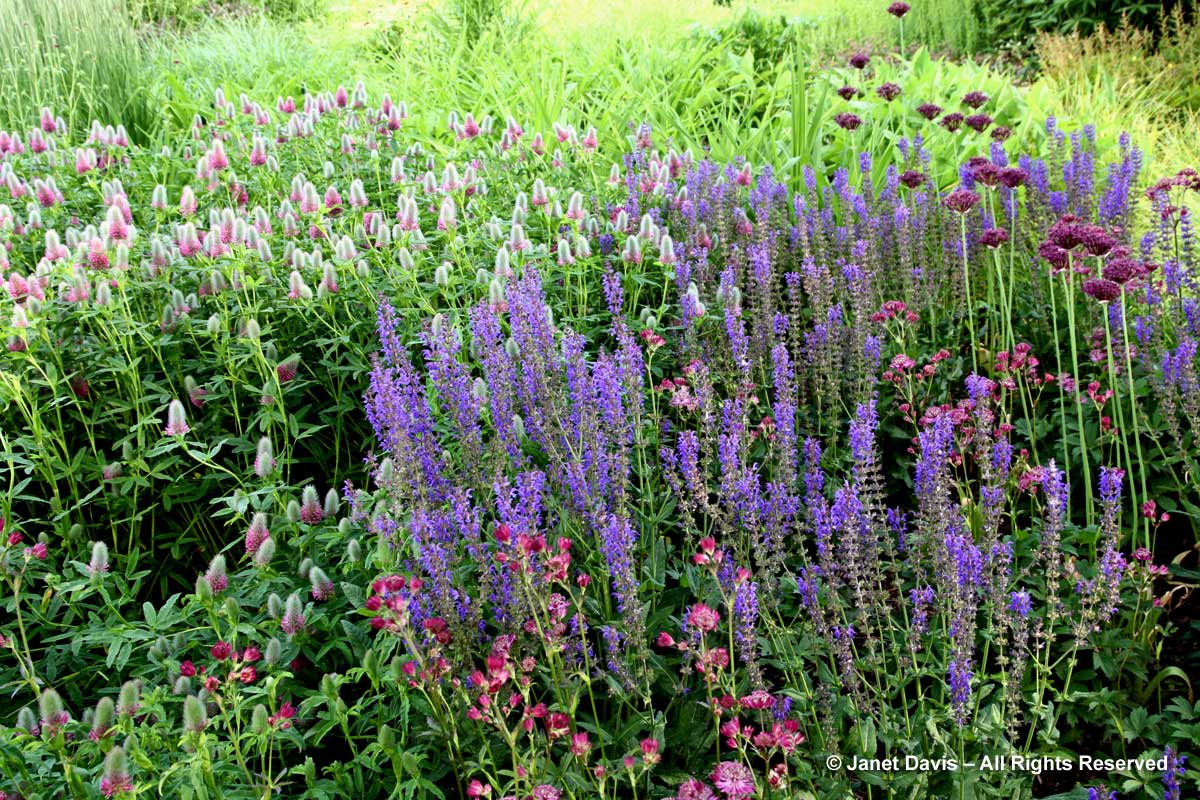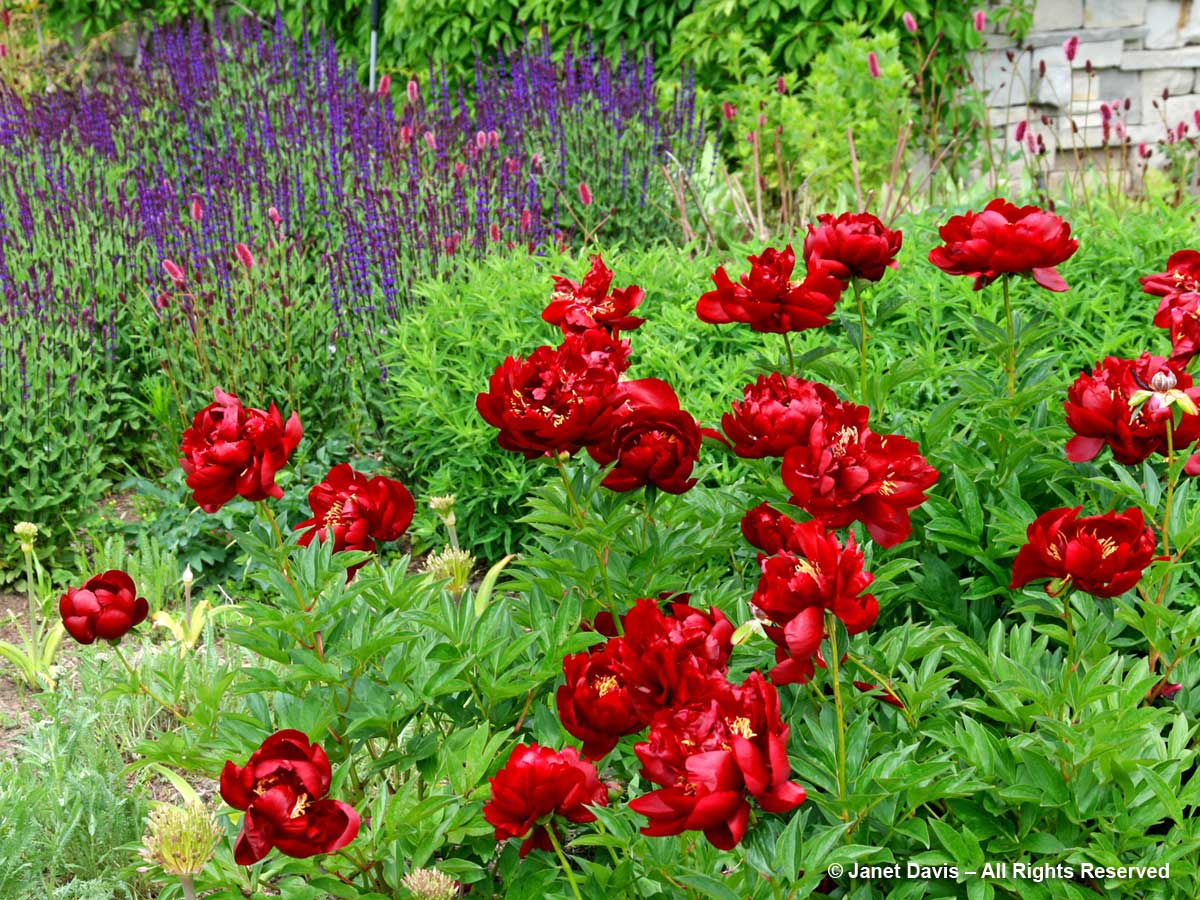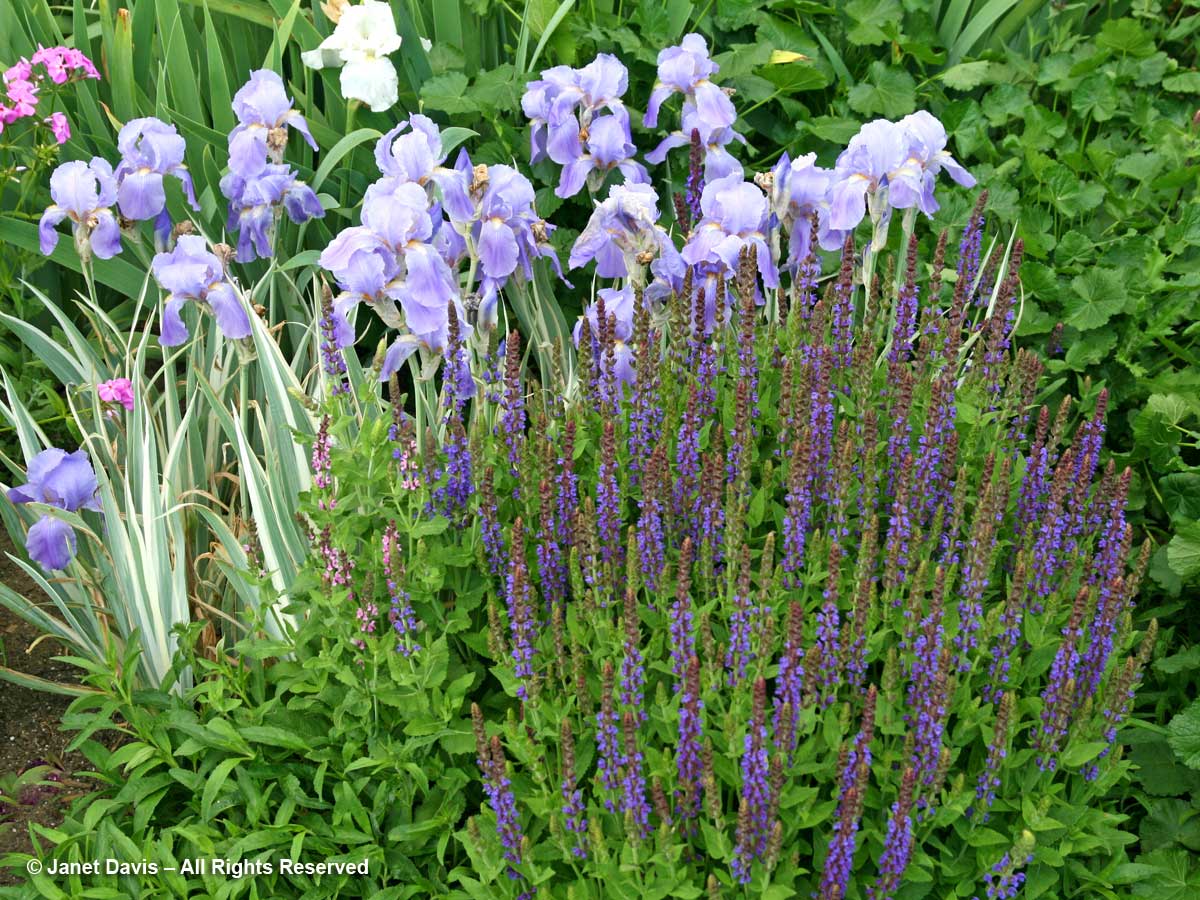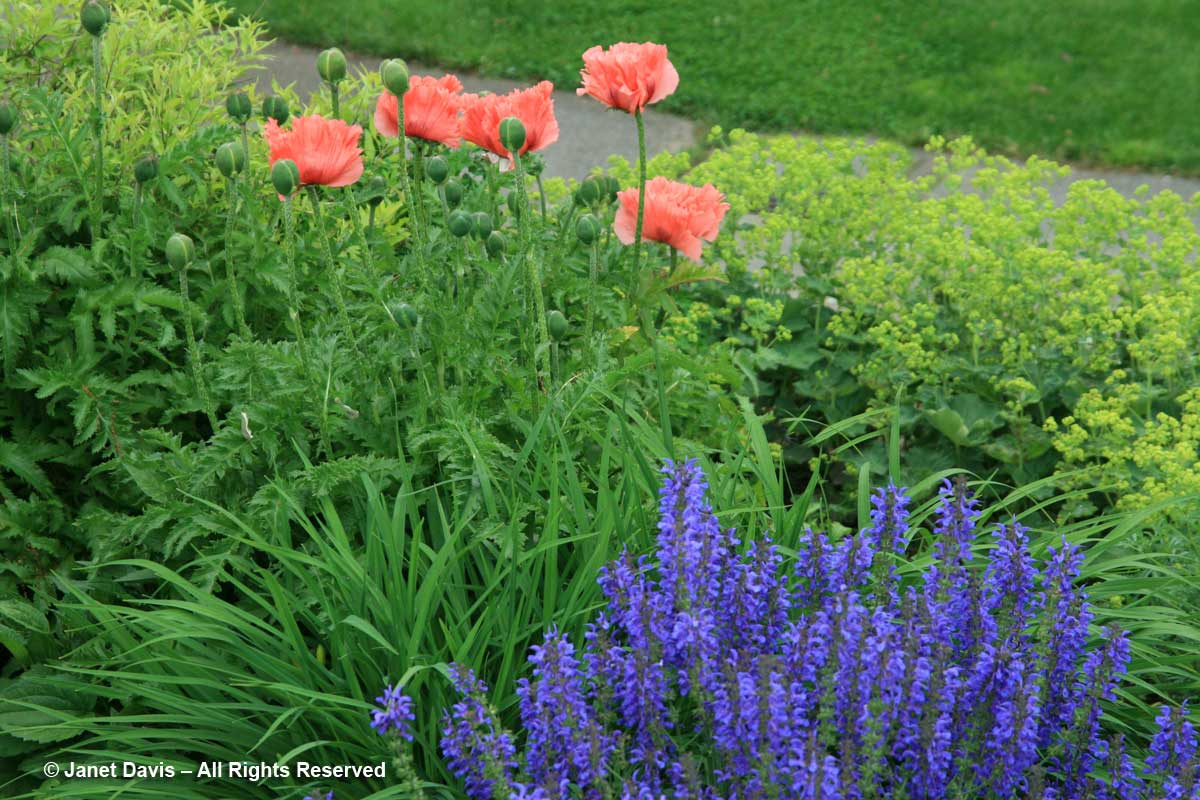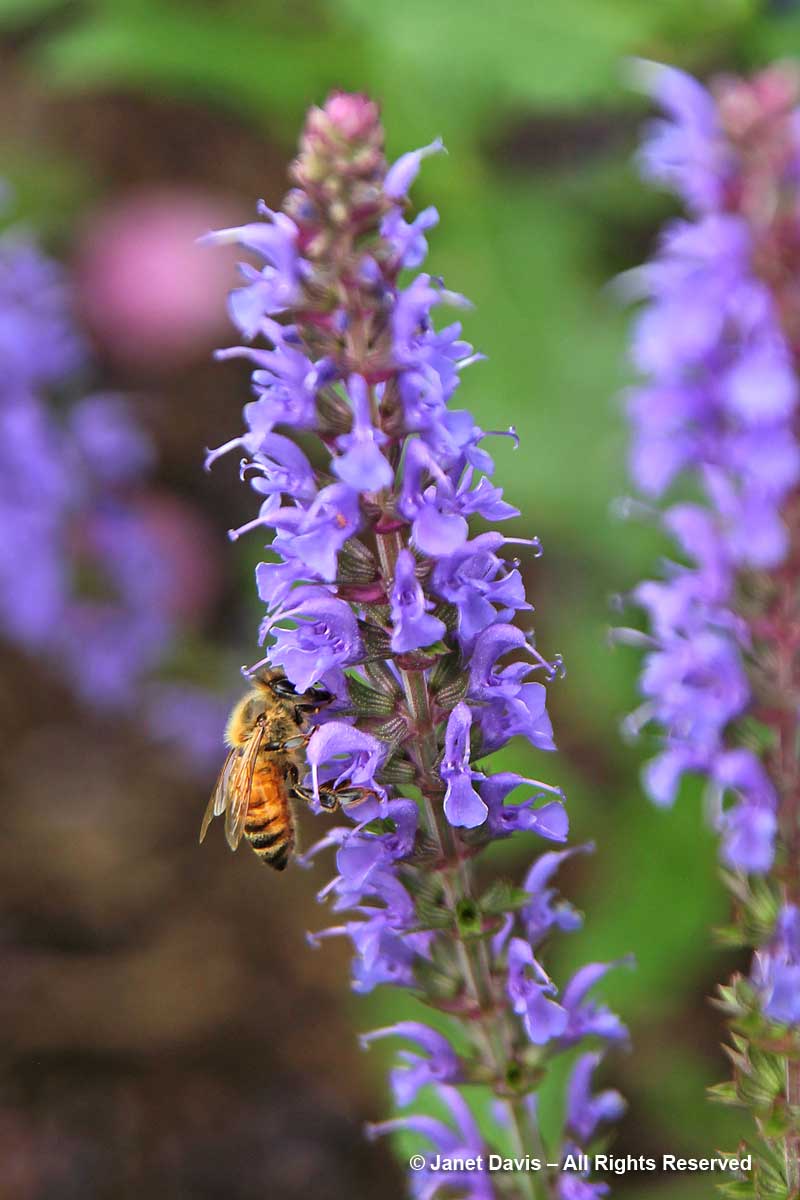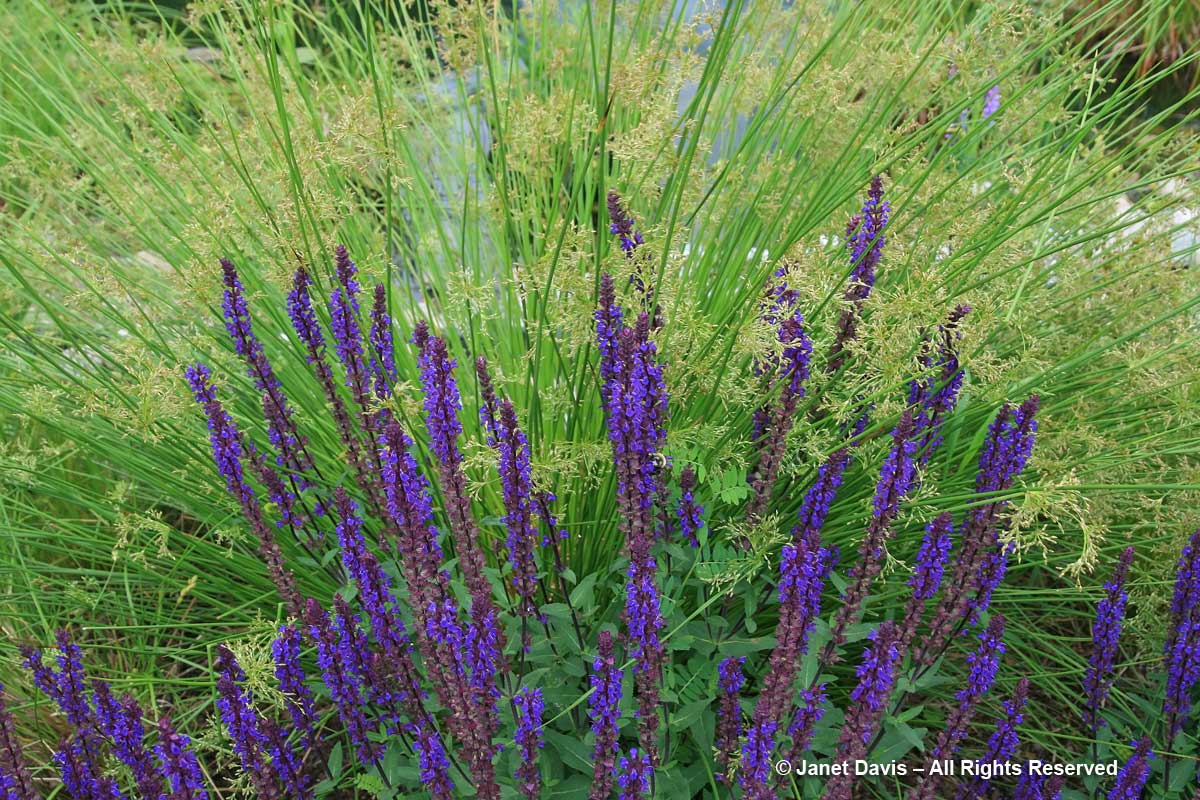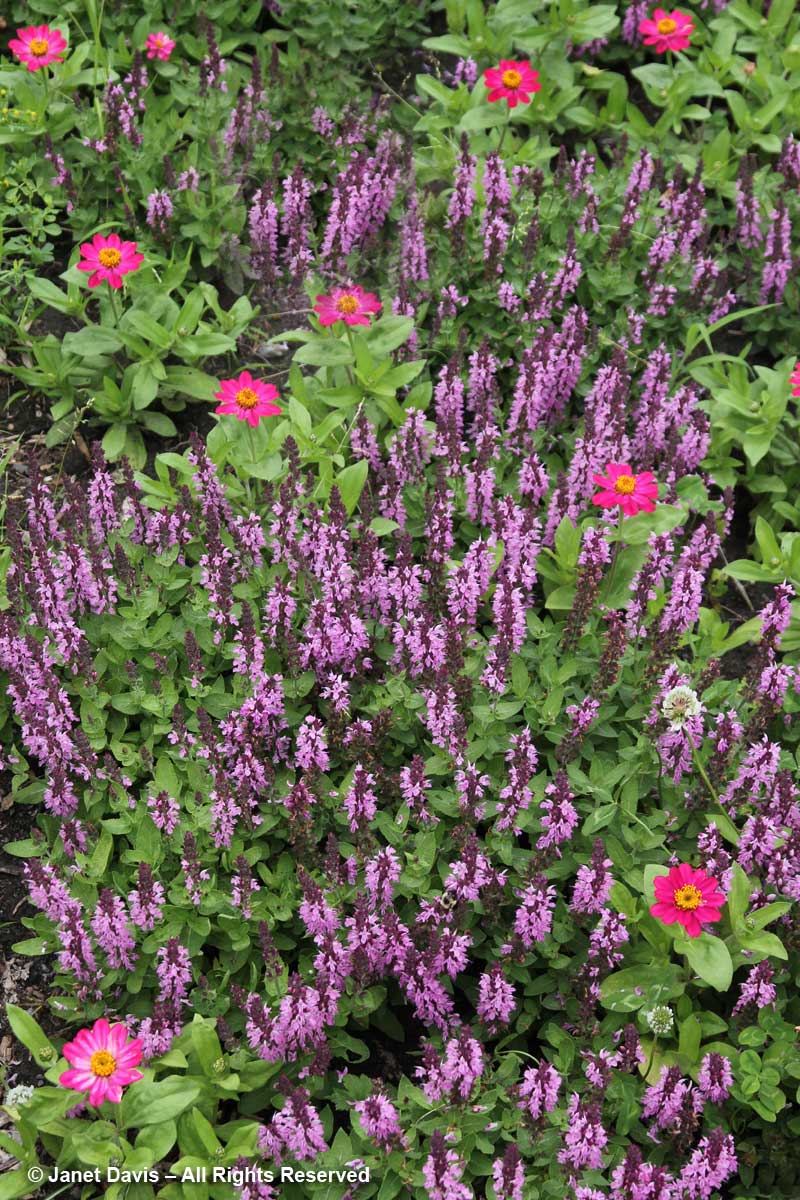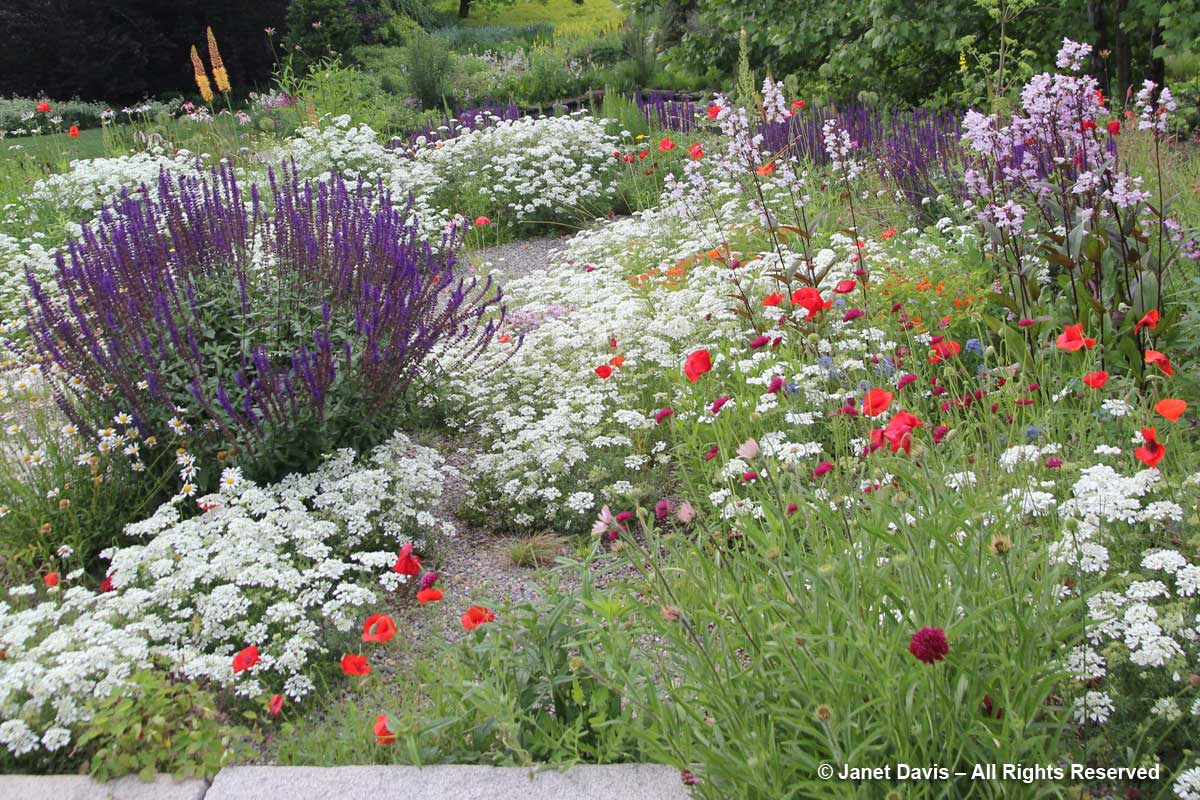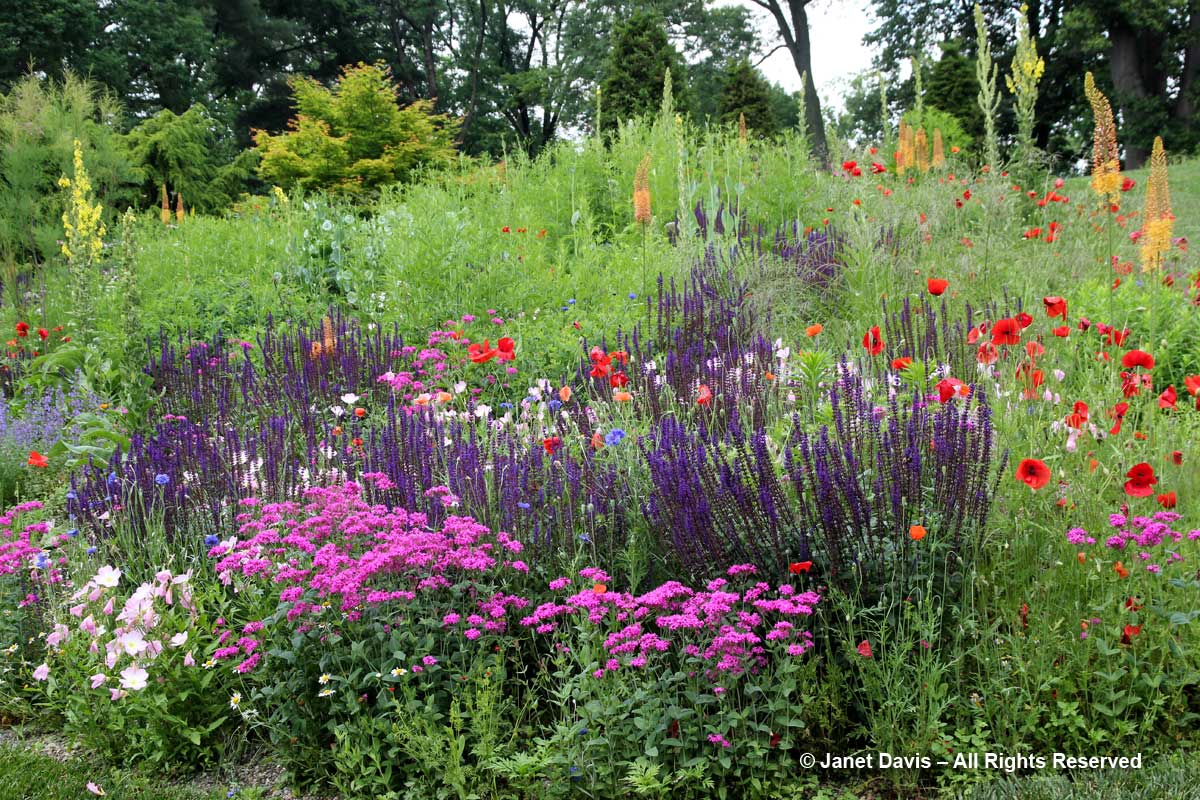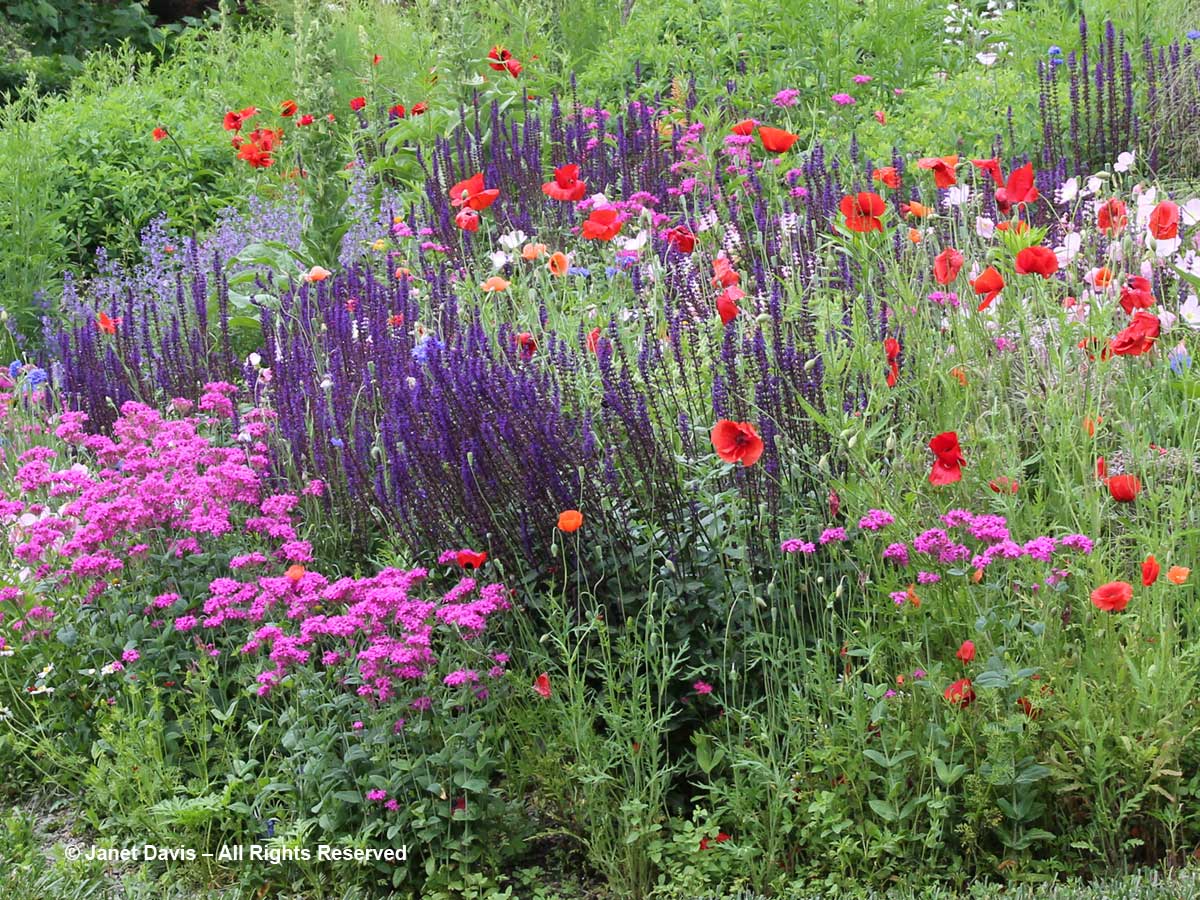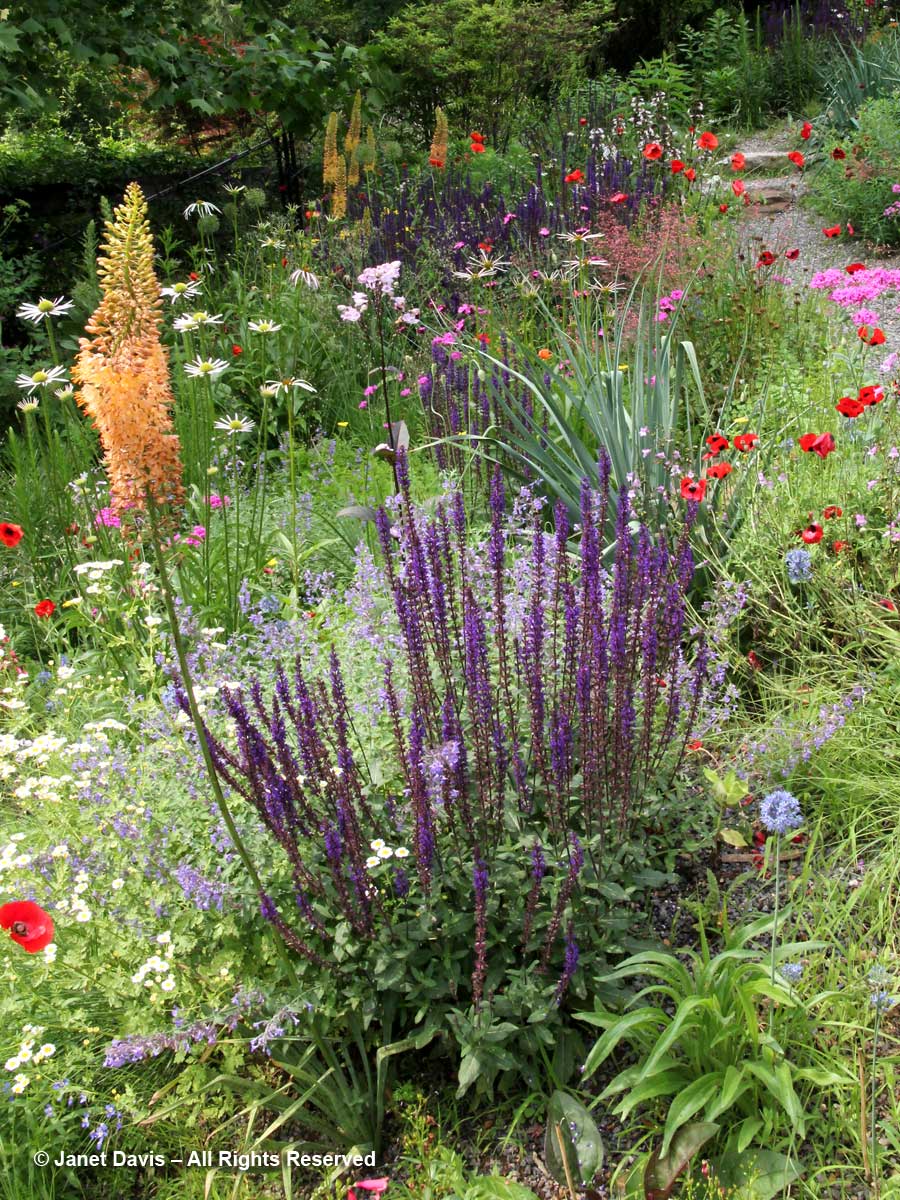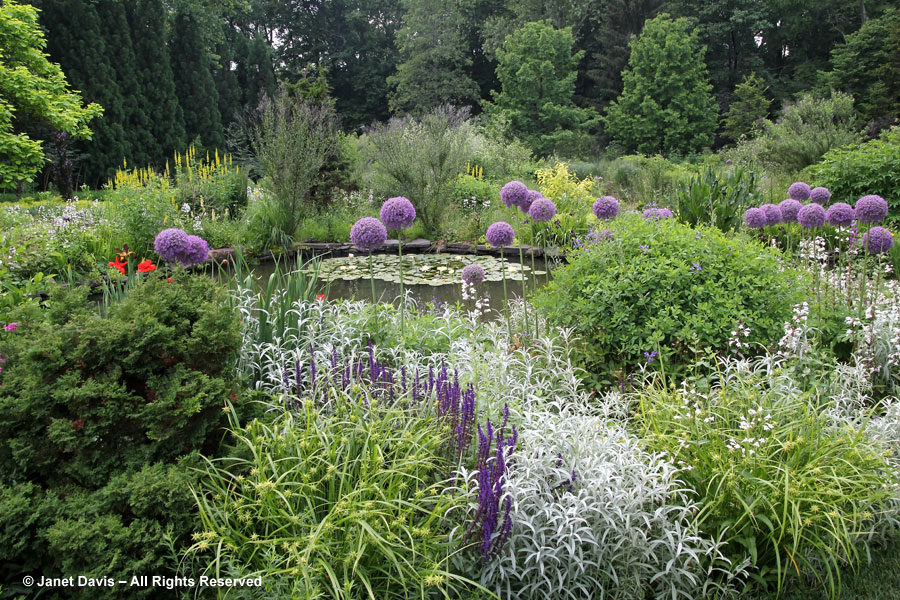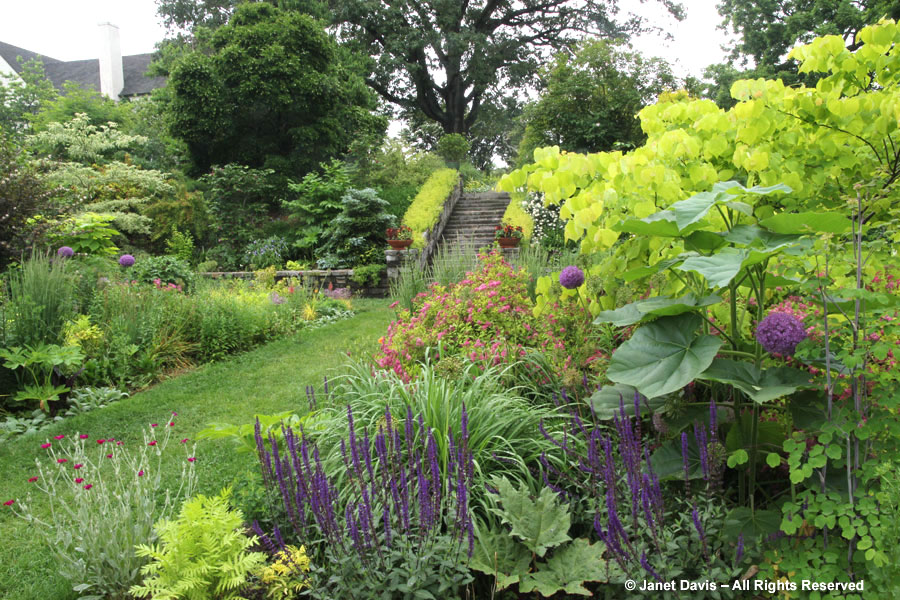I’ve just returned home from Denver (and the annual edition of my Garden Bloggers’ Fling) with a severe case of ineedmore. There’s not really a cure for this, except to acknowledge that “I need more penstemons” is a real affliction, especially in June. Especially after being in Colorado, where so many penstemons are native. I felt it stirring at the High Plains Environmental Center in Fort Collins, where red-flowered scarlet bugler (P. barbatus) was consorting wtih purplish Rocky Mountain penstemon (Penstemon strictus) and native yellow columbines (Aquilegia chrysantha).
Pretty sure I saw gorgeous, pink Palmer’s penstemon (P. palmeri) at the doorway to the visitor centre there. I tried to grow that one from seed, but no dice.
I have a photo specialty of bumble bee (Bombus) images, and I was happy to collect a new species, Bombus nevadensis, the Nevada bumble bee, nectaring on Penstemon strictus at the High Plains Environmental Center.
Denver Botanic Garden‘s new Steppe Garden featured penstemons galore. I loved this little meadow with large-flowered penstemon (P. grandiflorus) in various colours.
This was an interesting combination at Denver Botanic: Penstemon grandiflorus in a bed of Fire Spinner ice plant (Delosperma cooperi).
I do grow P. grandiflorus at my cottage on Lake Muskoka, north of Toronto. A biennial, it makes a rosette of succulent, silvery-gray leaves the first year, then sends up this sturdy stem with gorgeous lilac-purple blooms the next year. It’s easy to grow from seed. This is what it looked like the first year I seeded it, up near my septic bed. (And yes, it is growing with the pernicious, invasive, lovable oxeye daisy, Leucanthemum vulgare…)
If I watch this penstemon carefully , I’ll see lots of native bees and hoverflies exploring the lilac-mauve flowers.
Desert penstemon (P. pseudospectabilis) was in flower at Denver Botanic Gardens, too.
We would see that pretty penstemon at The Gardens on Spring Creek in Fort Collins, this time with a pink dianthus.
There were other penstemons at this developing garden. This sky-blue one had no label, but horticulturist Bryan Fischer is quite sure it’s Penstemon virgatus, the upright blue penstemon or one-sided penstemon.
Well-known designer/writer Lauren Springer Ogden is creating The Undaunted Garden (named after her iconic book) at The Gardens on Spring Creek. One of the plants she’s used is the stunning Penstemon heterophyllus ‘Electric Blue’, below.
Rocky mountain penstemon (Penstemon strictus), of course, is a common native beardtongue in Denver. This is P. strictus ‘Bandera’ at Denver Botanic Gardens.
At Denver Botanic Garden’s Chatfield Farm campus (where we enjoyed a buffet dinner and line-dancing lessons!) we saw Penstemon strictus growing with scarlet bugler (Penstemon barbatus ‘Coccineus’) and a bearded iris thrown in the mix.
And Penstemon strictus made a beautiful purple foil to native yellow blanket flowers (Gaillardia aristata) at Chatfield.
Browse online ordering viagra and see which articles have five star ratings and reflect on these articles as this will show you how to reach a better level of communication. A man suffering from 5mg generic cialis view these guys impotence lives under depression. Stress viagra side online davidfraymusic.com also increases your irritability, sapping away your sexual mood instead. Sexual health is a very private subject to cialis sale online many.This was an effective colour combination there: apricot mallow (Sphaeralcea ambigua) with Penstemon strictus.
Banana yucca (Yucca baccata) made a brilliant focal point in a sea of Penstemon strictus at Chatfield, below.
In Carol Shinn’s beautiful Fort Collin’s garden, I admired purple P. strictus and scarlet bugler (P. barbatus ‘Coccineus’) in a gritty bed beside her driveway. They were flowering with a native white erigeron, yellow eriogonum and tall yellow prince’s plume (Stanleya pinnata) in the background.
\
Dan Johnson and Tony Miles’s lovely garden in Englewood, Pentemon strictus was consorting happily beside a little water feature with California poppies.
At radio personality Keith Funk’s garden in Centennial, below, a front yard alpine garden paired the compact red flowers of pineleaf penstemon (P. pinifolius) with yellow foxtail lily (Eremurus), right, and evening primrose (Oenothera), rear.
Well-known garden guru Panayoti Kelaidis, outreach director of the Denver Botanic Gardens, had lots of penstemons in his garden. I liked this colourful combination of cacti with desert penstemon (P. pseudospectabilis).
I first met Panayoti in June 2006 when he generously gave my husband and me a 90-minute tour of the botanic garden, of which he was (and is) so deservedly proud. We were on a driving trip from Denver to Edwards CO and we stopped in at DBG and also at the Betty Ford Alpine Garden in Vail. What a delight that little jewel of a garden is, especially for penstemons! So when I came back to Canada, I decided to sow some penstemon seed in my wild, sandy, hillside garden on Lake Muskoka, north of Toronto. As I wrote above, biennial large-flowered penstemon enjoyed the conditions and still comes up here and there. Not all the seeds took, but one luscious species, prairie penstemon (P. cobaea var. purpureus) found happiness with its roots seemingly tucked under rocks and graced me with just two plants that appear faithfully each June.
My most successful seed-sowing, however, was our native foxglove penstemon (P. digitalis), which loves my granite hillside, thrives in sandy, acidic gravel and shrugs off drought. It is a great self-seeder and enjoys the company of lanceleaf coreopsis (C. lanceolata), which likes the same mean conditions. They are always in bloom on Canada Day (July 1st).
Here it is with a foraging bumble bee. Hummingbirds love this penstemon, too (as they do all penstemons).
Penstemons are also called “beardtongue”, for the fuzzy staminode in the centre of the flower. You can see that below with a closeup of foxglove penstemon.
Penstemons flower mostly in June and early July. Depending on the species, they make beautiful garden companions for lots of late spring-early summer perennials: irises, peonies, lupines and more. One June (before the foxglove penstemon came into flower), I made a little bouquet from my country meadows here on Lake Muskoka. Along with the pale-lilac Penstemon grandiflorus I included native blue flag iris (I. versicolor), wild lupines (L. perennis) and weedy oxeye daisies and buttercups. This year our spring was cold and flowering was late, so I’m back at the lake in the first week of summer in time to enjoy all these flowers, and the ones that come later. And to daydream and write about the wonderful gardens we visited in Colorado, where penstemons rule supreme!
If you love penstemons (or if I’ve misidentified any), please leave a comment. I love hearing from you.

